Power up your recycling efforts with these 4 amazing local organisations
- Home
- Articles Posted by (
- Page 4 )
[Post Date]
Power up your recycling efforts with these 4 amazing local organisations
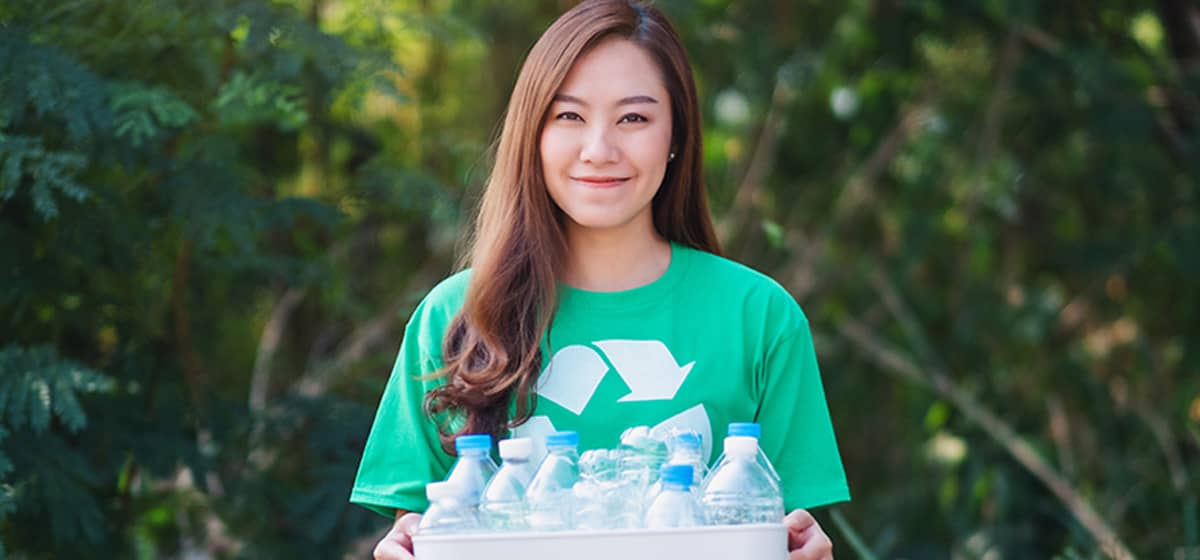
Ocean waste, plastic bottles and used coffee grounds – what do they all have in common? Well, they can all be recycled and made into brand new products! If you’re wondering what these waste materials can be made into – you’re in for a surprise!
As the country marks a year of the Singapore Green Plan 2030 in a few months, more and more businesses are investing in innovative methods to recycle and upcycle our everyday trash. This is especially timely and crucial given that consumerism continues on an upward trend. According to CNA, Singapore’s resource consumption per capita ranks 24th in the world, a sure sign that there is much room for improvement in this area.
In today’s blogpost, we want to spotlight four homegrown companies that are giving waste materials a brand-new lease of life. Read on to find out more!
1. Align Swim
A proudly Singaporean brand, Align Swim is anchored on the tenets of sustainability; every aspect of the brand’s decisions from production to distribution is made with our environment in mind.
All of their pieces are designed locally, and sent to an ethical factory in Bali, Indonesia to be manufactured. To minimise wastage, the brand is also conscious of not overproducing their swimwear – a thoughtful mindset shift in today’s fast fashion industry.
Each of its swimwear is produced from either Econyl, a form of regenerated nylon made from landfill or ocean waste items such as fishing nets, old carpets and textile scraps, or Repreve, a form of fibre made from recycled materials including plastic bottles.
This not only helps in saving these waste materials from polluting our oceans, but also reduces the energy and resources needed to make virgin materials, lowering our environmental impact and minimising greenhouse gases.
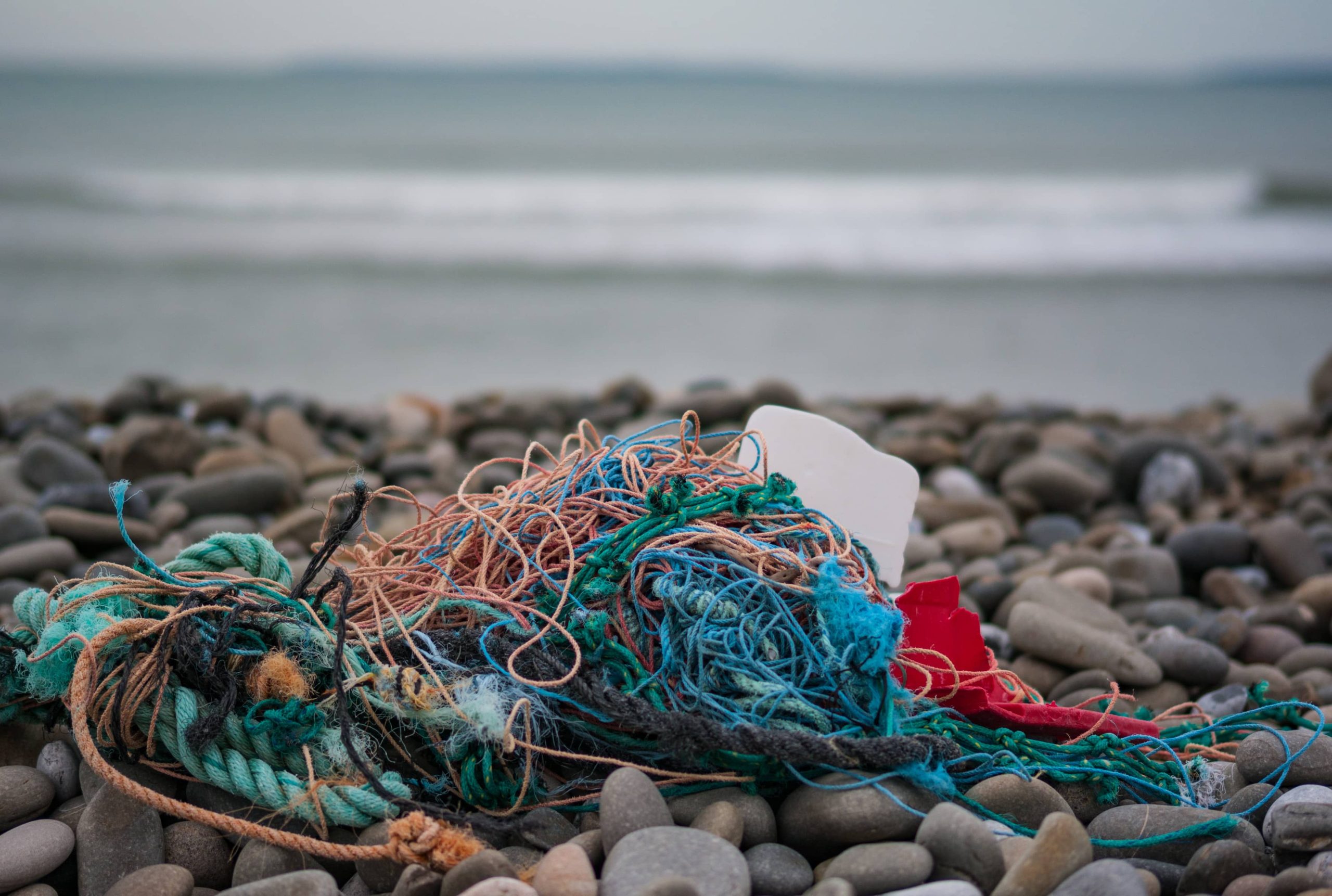
Beyond ensuring the sustainability of its swimwear, Align Swim also extends its eco-friendly initiatives to its mailing materials. All its products are shipped out in 100% compostable mailers or its custom recyclable Align Envelope. What’s more, if you’re looking to gift someone an Align Swim piece, look forward to having it beautifully wrapped in the brand’s custom designed Furoshiki Gift Wrap! The Furoshiki cloth can even be reused in many different ways including as a bag, scarf, or even passed on as a gift wrap for yet another gift.
2. Ayer-Ayer
A social enterprise, Ayer Ayer was born out of the mission to bring together different communities to create art pieces made from recycled microplastics. Not sure what microplastics actually are? Well, these small plastic pieces are actually the most prevalent type of marine debris found in our oceans, broken down from larger plastic waste that may have been disposed into our water bodies. While miniscule in size, these tiny pieces of plastic are harmful to marine life. Studies have shown that microplastics may disrupt these animals’ reproductive systems, cause liver damage and even alter their feeding behaviour.
Collecting and sorting these plastic trash that are washed up on our local shores, Ayer Ayer breathes new life into these materials by re-creating them into beautiful art pieces and furniture such as tables and chairs! These one-of-the-kind pieces can be found as bar tables at rooftop bar Potato Head Singapore, so do go and check them out!
Alternatively, you can also purchase unique art tiles made from plastic trash and use them as home decorative pieces. Ayer Ayer occasionally organises pop up sales of their one-of-a-kind artwork items, which you can keep an eye out for on their Facebook and Instagram!
For those who would prefer a hands-on experience, the brand also organises workshops that share with participants the many different facets of plastics; from production to recycling. To try your hand at making some handcrafted items from post-consumer plastic, check out more information here!
3. A1 Environment
Coffee is one of the most popular beverages in world and widely enjoyed across cultures all across the globe. But, have you ever wondered what happens to the used coffee grounds after our cup of joe is brewed?
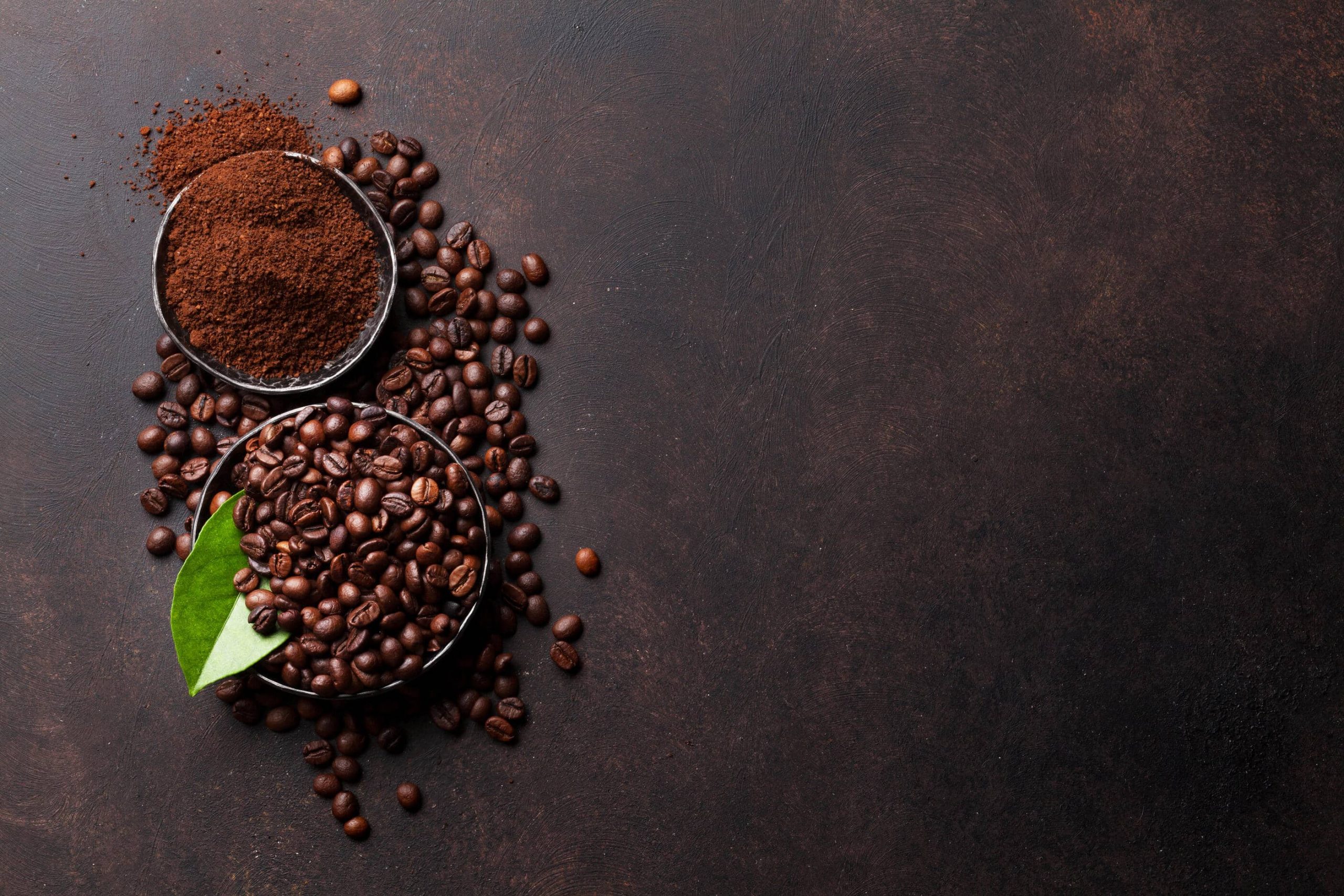
Currently, most of our spent coffee grounds is disposed into the bin and sent to our landfill for incineration, which contributes to our growing food waste issue. Eventually, these coffee grounds decompose in the landfill and release a great amount greenhouse gases, resulting in a direct impact to our environment.
However, one homegrown company is changing the landscape. With the aim to close the loop in the coffee industry, A1 Environment recovers coffee grounds from various industries including F&B and hospitality, and transforms them into wood-like panels that can be used to make furniture. To date, the company has converted more than 650,000kg of coffee, giving them a new lease of life. With this innovative solution, A1 Environment not only saves these used coffee grounds from the landfill but also reduces the number of trees cut down to make furniture!
As A1 Environment scales up its operations this year, the firm is planning to launch a range of furniture as well as other items such as flowerpots – stay tuned for updates on their Instagram and Facebook pages!
In addition, A1 Environment also uses these spent coffee grounds for food compost in community gardens to encourage other like-minded individuals to make use of these coffee grounds that deserve a second chance. You can get in touch with them to help boost and green up your local community gardens here!
4. Tay Paper Recycling
With a myriad of paper recycling services and more than 32 years of paper recycling experience, Tay Paper Recycling has played an instrumental role in diverting much of Singapore’s paper waste from the landfill. It offers the full suite of recycling services from on-site shredding, collecting to sorting, making it a breeze for any company to get onboard as one of their partners. In addition to paper, Tay Paper also recycles plastics, old clothes and e-waste.
Geneco is proud to have partnered with Tay Paper Recycling during our #ChangeBringsProsperity initiative again after last year’s successful collection and recycling of 410kg of red packets! From now till 6 March, simply drop off your used or excess red packets at any of the 24 Used Red Packet Recycling Bins located at any of our partners – CRU, IUIGA, Refash, and Wisma Atria – island-wide. These red packets will then be pulped and made into paper products including tissue, paper towels, and of course, even more paper!
And while you’re doing good for the environment, share with us which Used Red Packet Recycling Bin you will be dropping off your red packets at on our Instagram or Facebook posts to stand a chance to win $28 worth of eCapitaVouchers!
As we look towards embarking on a greener journey this year, we hope that you’d be inspired to support these local companies paving the way for a brighter and more sustainable tomorrow.
Together, let’s continue to #PowerTheChange and share our prosperity with our future generations.
Image Credits: Nylon Coffee Roasters
Source: The Sustainability Project
Your DIY guide to making recycled paper at home
- Home
- Articles Posted by (
- Page 4 )
[Post Date]
Your DIY guide to making recycled paper at home

Every day, Singapore produces approximately 16,120 tonnes of waste – that’s enough to fill about 7 Olympic-sized swimming pools! However, with a low domestic recycling rate of 13%, most of these waste are sent for incineration at our local landfill. Given our limited landmass in Singapore, this is a worrying trend as there is simply not enough space to hold all our trash! Our only landfill – Semakau Landfill – is estimated to be fully utilised by 2035.
As Singapore works towards building a circular economy, how can each of us contribute by increasing our recycling efforts? For starters, let’s focus on recycling one of the most common items – paper.
There are many ways which we can recycle paper. This includes dropping them off at the nearest recycling bin or selling them to our local karang guni – rag and bone man.
However, did you know that you can try paper recycling right at home as well, and customise them into your very own greeting cards or gift tags that’s truly one of its kind. So here’s an easy and fun eco-friendly guide to get you started on making your own recycled paper!
The entire process is simple – no fancy craft tools required. All you need are:
- Old / used papers such as newspapers, magazines, notebooks etcetera
- An A5-sized hard plastic mesh
- Cotton cloth
- Large container, preferably A4-sized or bigger
- Water
Step 1: Tear your old pieces of paper into small bits
Gather your old scraps of paper and make sure that they’re void of any plastic or staples before tearing them into small pieces about an inch wide and throwing them into your container. Feel free to make the pieces of paper as tiny as possible to get them soaked more easily in the next step.
Should you have some old scraps of thicker paper such as drawing paper or watercolour paper lying around, do also include them into the container as well – this will help in producing a stronger, thicker quality for your final product.

Pro Tip: Experiment with different colour combination paper scraps to produce beautiful handmade paper with a rustic feel. Throwing in different textured paper will also yield a more unique final product!
Step 2: Soak your papers bits
Thereafter, fill your container of paper scraps with water before leaving them to soak for 24 hours. While the ratio of pulp to water can vary depending on how thick you’d like your sheets to be, the general rule of thumb is to have equal measures of paper pieces and water. The more pulp to water, the thicker your paper will be, so feel free to experiment by changing up the ratio. Do remember to stir the bowl occasionally to prevent the paper pieces from clumping together!
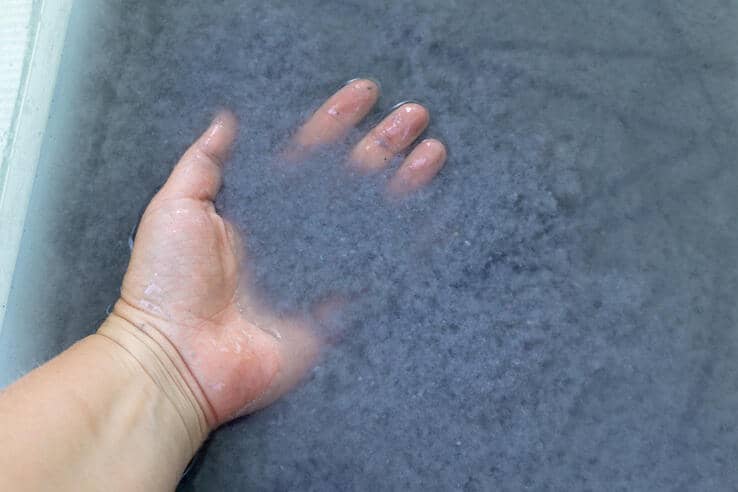
Pro Tip: To produce whiter paper, add about a tablespoon of white vinegar to bleach the pulp mixture
Step 3: Dip the A5 plastic mesh into the container
After 24 hours of soaking, you are now ready to start making your first piece of paper! For those of us wondering about the kind of plastic mesh that would work for this – check out an example below! Essentially, any plastic mesh that is hard and sturdy would do the trick.

Slowly dip one side of your plastic mesh into the mixture at a 45-degree angle and flatten it at bottom of the container. Gradually, the paper mâché will start gathering on top of the mesh, covering it from top to bottom. Allow the paper mâché to settle on the mesh as evenly as possible.
Do be patient for this step ad you may end up with sheets of uneven and bumpy paper if the pulp mixture does not settle evenly!
Step 4: Shape the paper mâché
Lift the mesh out of the container with as little disturbance to the pulp mixture as possible. Thereafter, gently use your fingers to even out the borders of the paper mâché on the plastic mesh. Don’t worry if they’re not perfect – it’s part of the process of DIY-ing our own recycled paper!
Once you’re happy with the shape of your paper, you can even add some decorative elements such as dried leaves or dried rose petals to beautify your recycled paper. Feel free to let your creativity run!
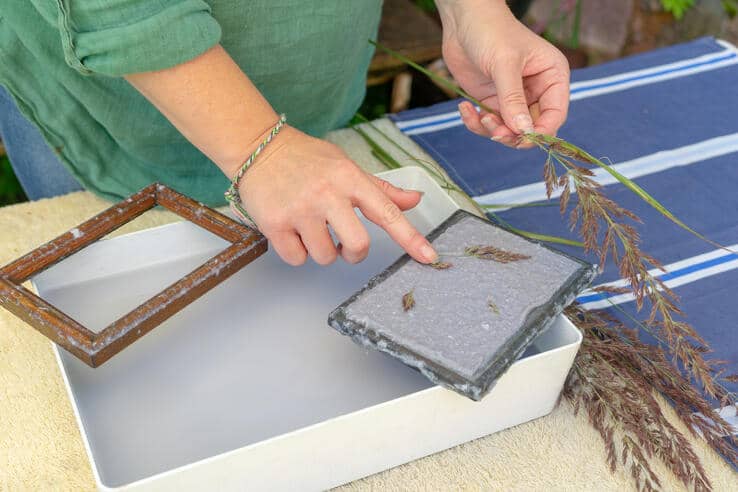
Step 5: Flip the paper mâché on a non-stick surface
Once the borders are more or less even, place the paper mâché side of the plastic mesh down on a non-stick surface, such as a wooden or glass table, before using your cotton cloth to soak as much water as possible from the top. When most of the excess water has been drained, carefully peel off the mesh and allow the paper mâché to dry overnight. If you’re excited to start using your recycled paper as quickly as possible, you can even use a hairdryer to hasten the process.
And that’s it! Once the paper mâché is completely dried, they should be slightly wavy and crisp. You can bind the various pieces together into your very own unique notebook or cut them up into smaller pieces to form a gift tag. You can even use these handmade papers as a Valentine’s Day card, or for other occasions and celebrations throughout the year – the possibilities are endless!
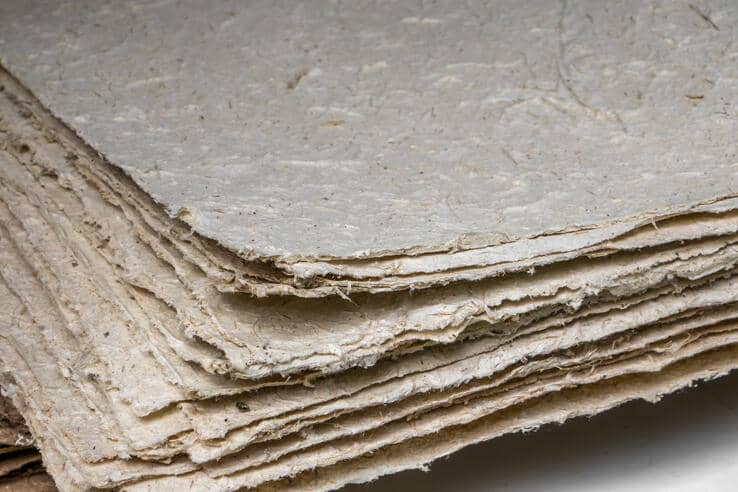
We hope that this easy tutorial will inspire you to recycle your old pieces of paper right at home. This activity is also a great opportunity to educate our little ones on how they can effect a change for our environment through such small but meaningful actions!
And if you find yourself wondering what to do with the stack of red packets you’ve collected this Chinese New Year, you can recycle them too by joining us in our #ChangeBringsProsperity initiative! Simply drop them off at any of our 25 Used Red Packet Recycling Bins located across the island from now till 6 March at Wisma Atria, or any IUIGA, CRU, and our Changemaker – Refash‘s outlets – after you’ve emptied them of course!
These red packets will then be collected by Tay Paper Recycling, where they’ll be pulped and made into other paper products such as tissue, paper towels and more writing paper!
Together, we can all #PowerTheChange by adopting a zero-waste lifestyle and work towards a greener future.
Image Credits: Nylon Coffee Roasters
Source: The Sustainability Project
5 Nature Reserves to Embark on a Wildlife Spotting Adventure
- Home
- Articles Posted by (
- Page 4 )
[Post Date]
5 Nature Reserves to Embark on a Wildlife Spotting Adventure
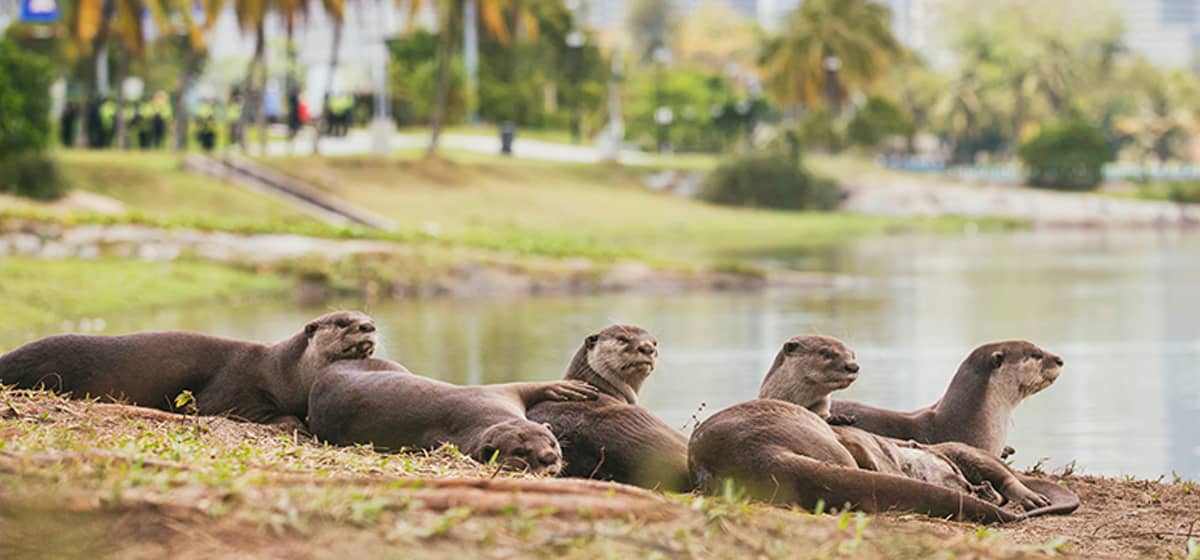
Living in a concrete jungle like Singapore, it may be easy to forget that we share our island with over 40,000 species1 of flora and fauna. These include native blooms such as the Wild Rose Apple and Akar Kepapal, which we’ve featured in our Chinese New Year Red Packets this year in collaboration with the National Parks Board (NParks)’s Garden City Fund, as well as a diversity of animals like owls, crocodiles and of course – our favourite families of otters.
This comes as no surprise since our sunny island used to be a rich and dense tropical jungle. While Singapore has rapidly urbanised since its early days, wild animals can still be spotted today at pockets of nature around our country given continuous conservation efforts.
If you’re up to spot some elusive animals living within our midst, grab your hiking boots for a trip to the wild right here in Singapore! Explore the many green spaces on our little red dot and get ready to be fascinated by the myriad of species that call Singapore home. At the same time, do keep a look out for the many native flowers that we’ve mentioned in our previous blogpost here. These wildlife add to the dynamism of our urban city, and truly makes Singapore unique.
Without further ado, here’s introducing five animals native to Singapore that can’t be missed:
1. Estuarine Crocodile at Sungei Buloh Wetland Reserve
Naturally found in our local wild, with its first sightings in Singapore tracing back to the 1800s2, the Estuarine Crocodile, also known as Saltwater Crocodile, is one of the largest crocodile species in the world and can grow to more than five metres in length3. This majestic creature often camouflages itself by keeping partially submerged in water, with only its eyes, nostrils, and part of its back exposed4, and can be found in coastal areas and wetlands such as our Sungei Buloh Wetland Reserve5.
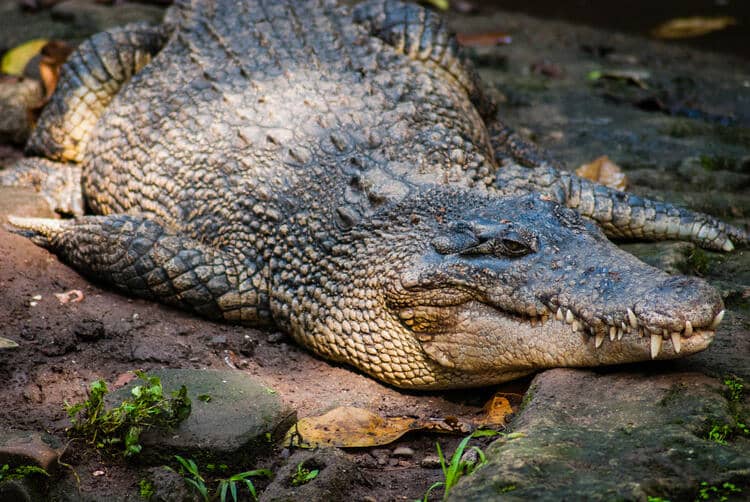
Fun fact: The Estuarine Crocodile has the most powerful bite out of all species of crocodiles, earning them the reputation as a top apex predator4!
Sadly, the Estuarine Crocodile is classified as critically endangered3 both internationally and in Singapore due to the destruction of its habitats, as well as overhunting for its hide to make products such as shoes and handbags. Overseas, its hatchlings are also sometimes sold as pets.
Besides keeping an eye out for these crocodiles, do look out for the wide range of native flora that Sungei Buloh is also home to. These include the bright yellow Sea Hibiscus6 and sweet scented Penaga Laut</strong class=”f-blue”>7 flowers, the latter of which is often used as dye, oil and even medicine. In addition, many native species such as the Mangrove Horseshoe Crab8 and Giant Mudskipper8 are also residents of Sungei Buloh. What’s more, the wetland also counts reptiles such as the King Cobra8 and Malayan Water Monitor8 as part of its dynamic ecosystem.
2. Sunda Pangolin at Bukit Timah Nature Reserve
The Sunda Pangolin, is a scaly mammal that is native to Singapore and the larger Southeast Asian region9. A unique animal unlike any other, the pangolin is covered with brown scales and has long claws as feet10. Found at various areas of Singapore, including Bukit Timah Nature Reserve9, this shy and solitary animal hunts mainly at night and feeds on insects such as ants and termites. For adult pangolins, it can consume up to 70 million insects every year9!
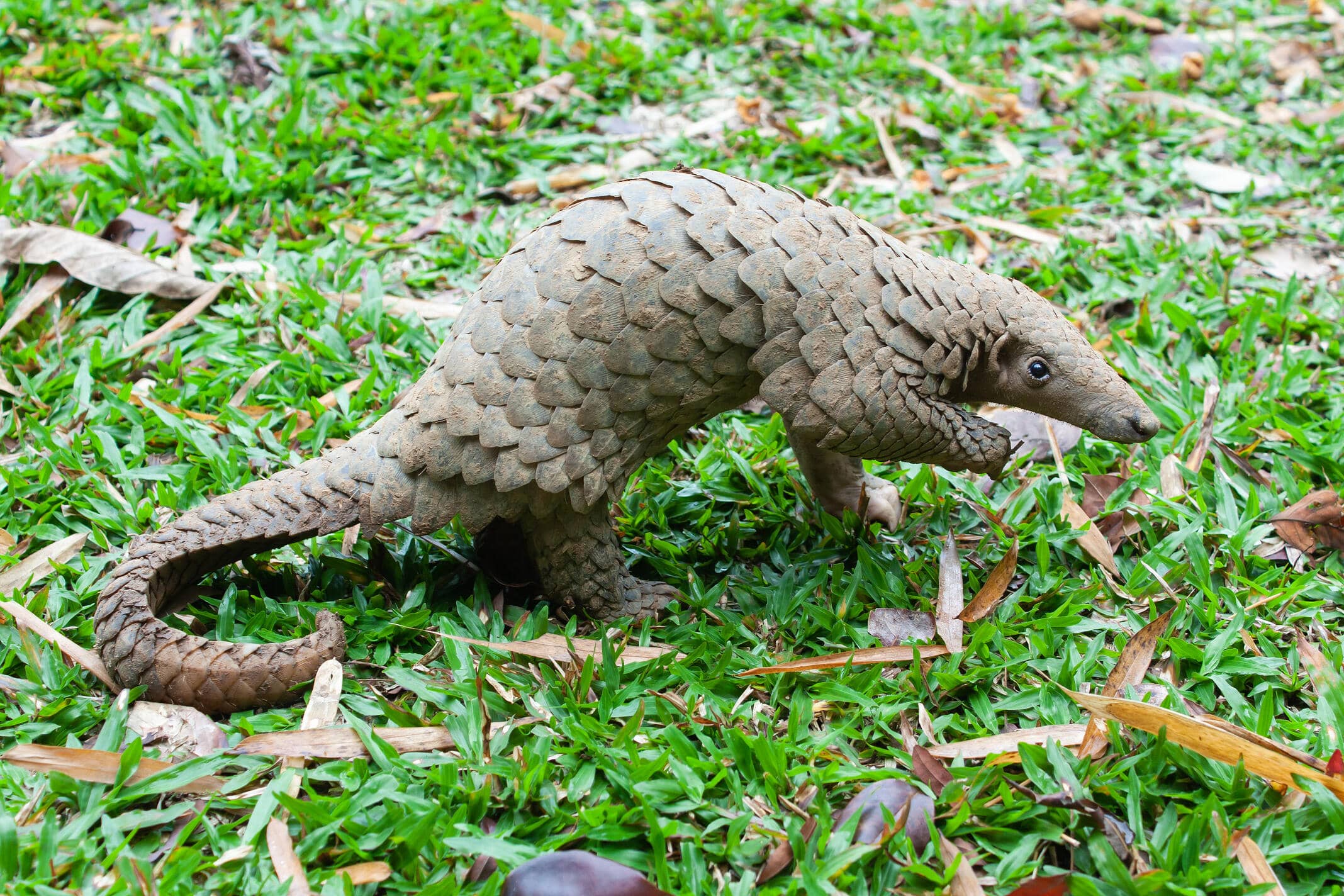
Fun fact: Its tough scales are actually made of compressed hair9! When threatened, the pangolin curls itself up into an armoured ball by wrapping its tail around its body to protect its non-scaly underparts, and may even use its anal gland to produce a foul smell to deter predators9.
Similar to the Estuarine Crocodile, the Sunda Pangolin is listed as critically endangered9 in Singapore due to the mass urbanisation that resulted in widespread habitat loss. Internationally, the low population of these animals can be attributed to over poaching for its meat and scales9. This is further exacerbated by its low fertility rate, resulting in its global population depleting much faster than it can recover9.
Given its elusive nature, it’s your lucky day should you come across a pangolin when visiting Bukit Timah Nature Park! However, fret not should you not be able to spot one as the park is also home to a wide range of other native plants. This includes the Seraya11 that is one of the oldest trees in Singapore, estimated to be at least 150 years old12!
3. Common Palm Civet at Bukit Batok Nature Park
Known affectionately as the Toddy Cat13, the Common Palm Civet is a nocturnal native mammal found in areas such as Bukit Batok Nature Park13. An omnivore, the civet can often be spotted navigating from tree to tree and feeding on fruits, leaves and worms13.
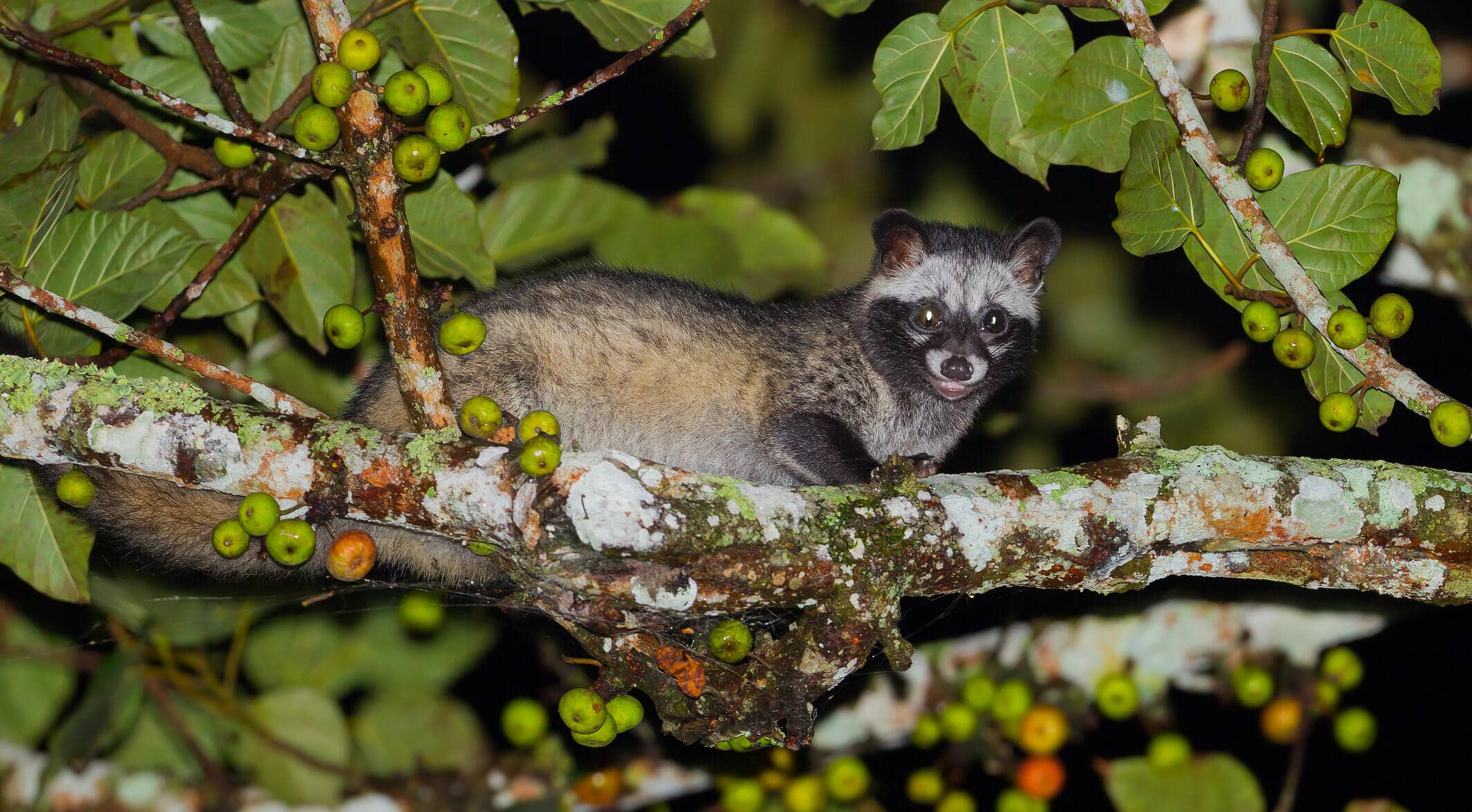
Fun fact: The length of its tail is almost of equal length as its entire body14!
Like other members of the civet family, the Common Palm Civet has a pair of stink glands near the base of its tail, which secretes a foul-smelling liquid when it feels threatened15. Interestingly, however, some have described these secretions as smelling like pandan16!
If you’re a coffee lover, you may have also heard of civet-processed coffee, otherwise known as Kopi Luwak. However, due to increasing global demand for this type of coffee, it has given rise to unethical production practices17, often involving the poor treatment of these civets. Hence, should you come across Kopi Luwak, we’d encourage you to be mindful and say no to such coffee choices!
Besides keeping an eye out for these civets at Bukit Batok Nature Reserve, do also look out for the leafy Tembusu18 trees that are native to Singapore. These large trees can grow up to 25 metres18 in height and is one of the many heritage trees identified in Singapore.
4. Wild Boar at Pasir Ris Nature Park
Native to Singapore, wild boars are large pigs that can weigh up to 100kg19. While they are natural omnivores19, these animals feed mainly on a plant-based diet that includes seeds, tubers and young plants19. With a keen sense of smell, these wild boars are foraging animals and are able to dig out underground tubers and seed for food20.
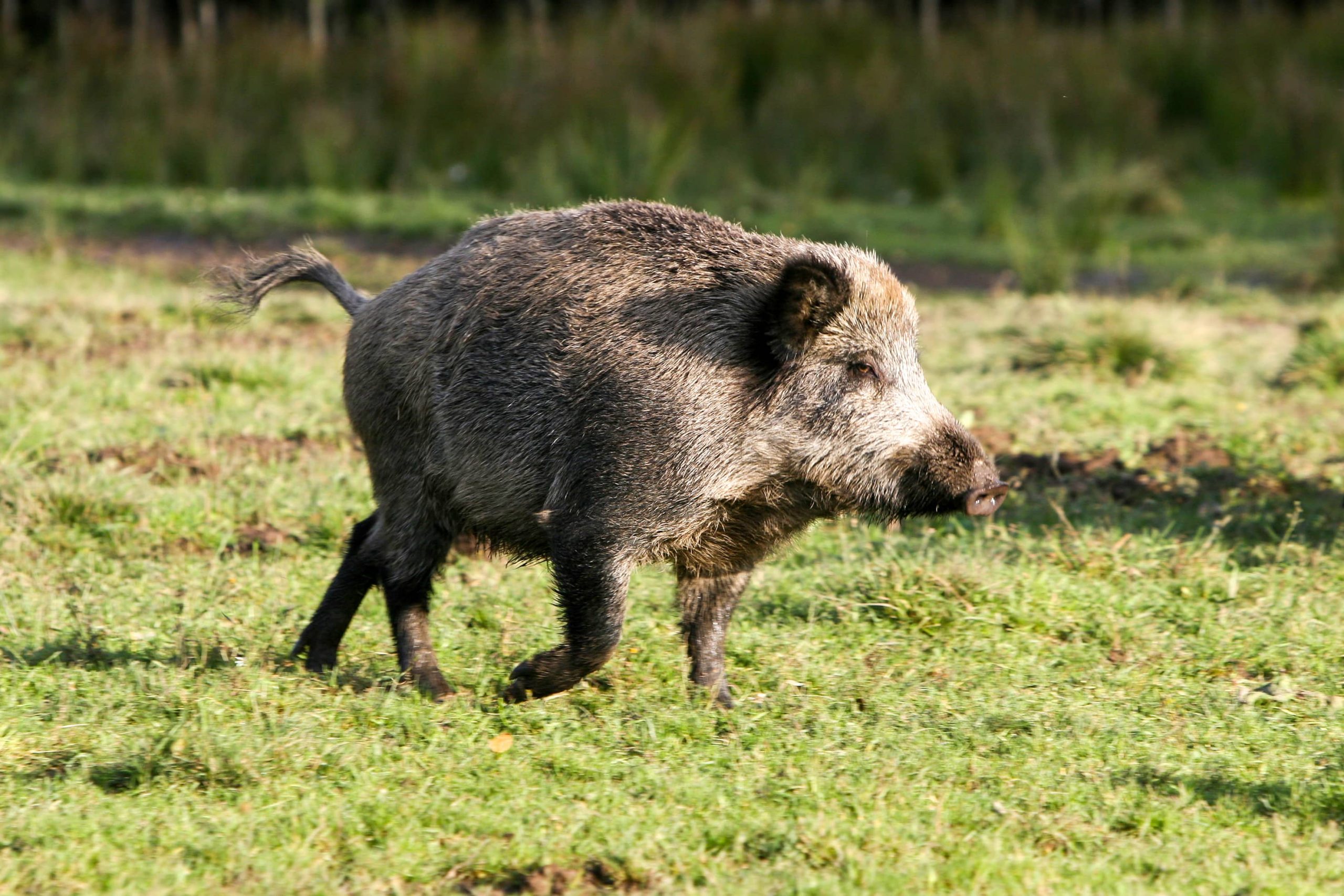
Fun fact: Despite their hefty weight, wild boars are surprisingly strong and fast runners20! They are also especially fertile, in which the females can start reproducing at 18 months19 of age and give birth to up to six piglets a year19!
In addition to spotting these animals at Pasir Ris Nature Park, do also keep your eyes peeled for the beautiful Blue Glassy Tiger butterfly21 that is also native to Singapore and identifiable by its unique bluish-grey wings. The park also features an edible garden21 with species such as lemon grass, tapioca and even the cocoa plant that is definitely worth exploring.
5. White-throated Kingfisher at Punggol Waterway Park
With a dark chocolate head, flank and belly, the White-throated Kingfisher gets its name from its contrasting whitish throat that extends down towards its breast. It’s electric blue wings and back also makes it easily identifiable from afar22. Native to Singapore22 and as one of the more common kingfishers in Southeast Asia22, it is highly adaptable and can be spotted frolicking at Punggol Waterway Park 23, alongside fringes of the reservoir as well as open fields.
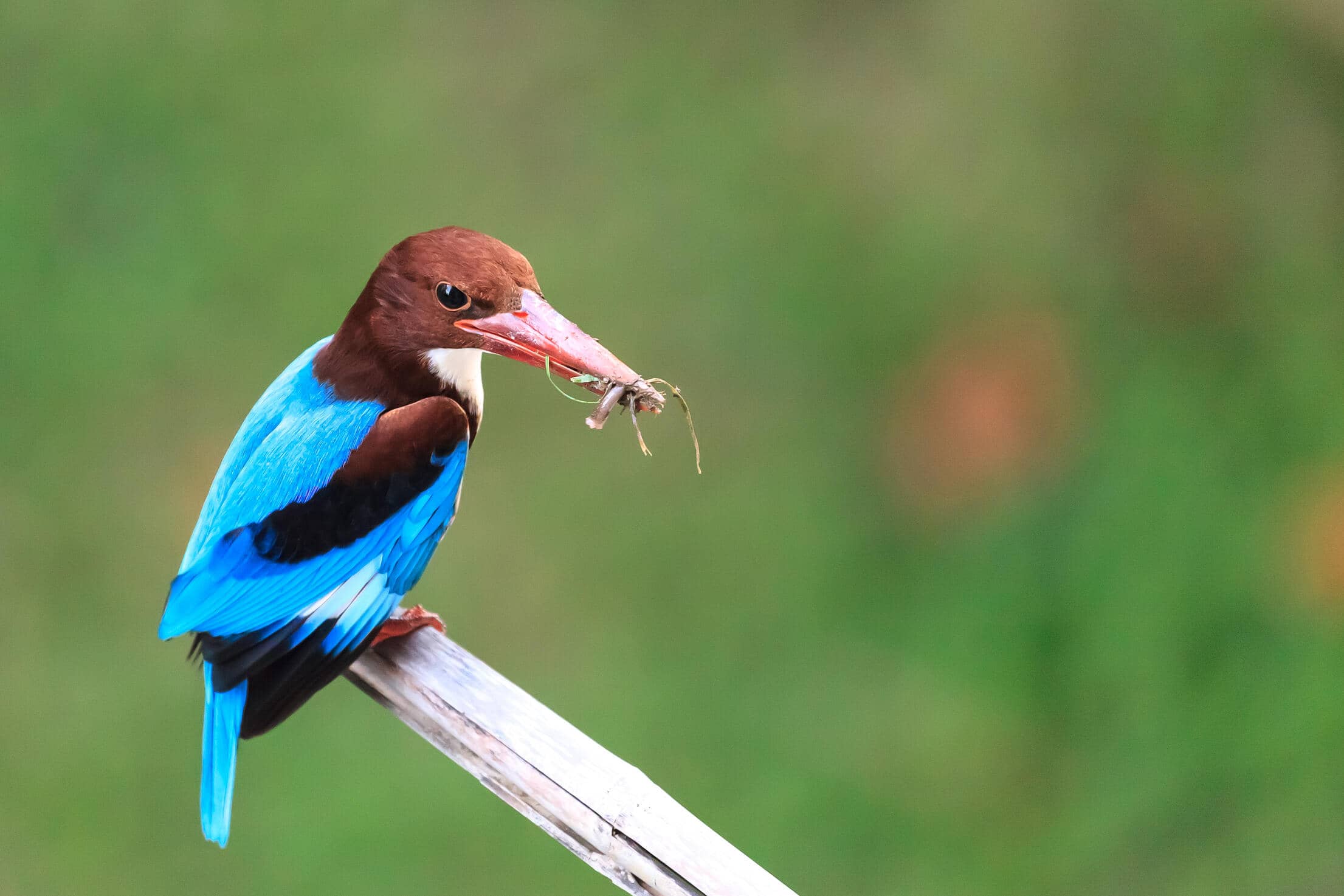
Fun fact: the White-throated Kingfisher is one of the bigger kingfisher species found locally and can grow up to 28 centimetres22. Its considerable size allows it to not only feed on insects, but also prey on fish and small animals22.
If you’re heading down to Punggol Waterway Park to spot one of these lovely birds, do also check out Singapore’s first man-made mangrove – My Waterway@Punggol24. This man-made site features a variety of freshwater-tolerant mangroves and houses many native plant species such as the Lumnitzera Iittorea24 and Kandelia candel24. Since establishing this site, it has attracted a spectrum of endangered bird species and flora, allowing them to flourish within the area and contribute to the thriving ecosystem.
We hope the above has pique your interest in heading out to discover and appreciate the whole range of wildlife we have in our country. If you’re curious to learn more about the other animals inhibiting our sunny island, check out one of Sir David Attenborough’s newest Netflix documentary here! Aptly named “Wild City”, this film unveils a whole different dimension of Singapore and takes you through the various unseen natural treasures that we might not even be aware of!
Together, let us remember the importance of a sustainable living environment, and continue to #PowerTheChange by conserving our green spaces and protect our natural heritage, so that we can share this prosperity with future generations.
Image Credits: Nylon Coffee Roasters
Source: The Sustainability Project
References:
- (2018, October). National Parks Board, Wildlife in Singapore
- (2021, October). The Straits Times, 'Crikey!': 6 recent crocodile sightings around Singapore
- (2021, February). National Parks Board, Estuarine Crocodiles
- (2022). Mandai Wildlife Reserve, Estuarine crocodile
- (2019, August). National Parks Board, Crocodylus porosus Scheneider, 1801
- (2021, August). National Parks Board, Hibiscus tiliaceus L.
- (2021, August). National Parks Board, Calophyllum inophyllum L.
- (2019). National Parks Board, Humble Natives of Sungei Buloh Wetland Reserve
- (2021, February). National Parks Board, Pangolins
- (2019, August). National Parks Board, Manis javanica Desmarest, 1822
- (2019). National Parks Board, Bukit Timah Nature Reserve: A Model for Conservation
- (2018). National Parks Board, In The Company Of Giants
- (N.D.). National Parks Board, Mammals Native to Singapore
- (2021, November). Kidadl, The Asian Palm Civet: 15 Facts You Won’t Believe!
- (2022). Mandai Wildlife Reserve, Common palm civet
- (2018). National Parks Board, Common Palm Civet
- (2016, April). National Geographic, The Disturbing Secret Behind the World’s Most Expensive Coffee
- (N.D.) National Parks Board, A Visit to Bukit Batok Nature Park
- (N.D.) National Parks Board, Wild Boars
- (N.D.) National Parks Board, What Are Wild Boars?
- (N.D.) National Parks Board, Your Guide to Pasir Ris Park
- (2019). National Parks Board, Meet the ‘Kings’ of Singapore’s Skies
- (2014, November). National Parks Board, Interesting Sights at Punggol Waterway Park
- (N.D.) National Parks Board, My WaterWay@Punggol. A Living Laboratory for Urban Living Solutions
4 Nature Reserves to Explore our Native Flora
- Home
- Articles Posted by (
- Page 4 )
[Post Date]
4 Nature Reserves to Explore our Native Flora
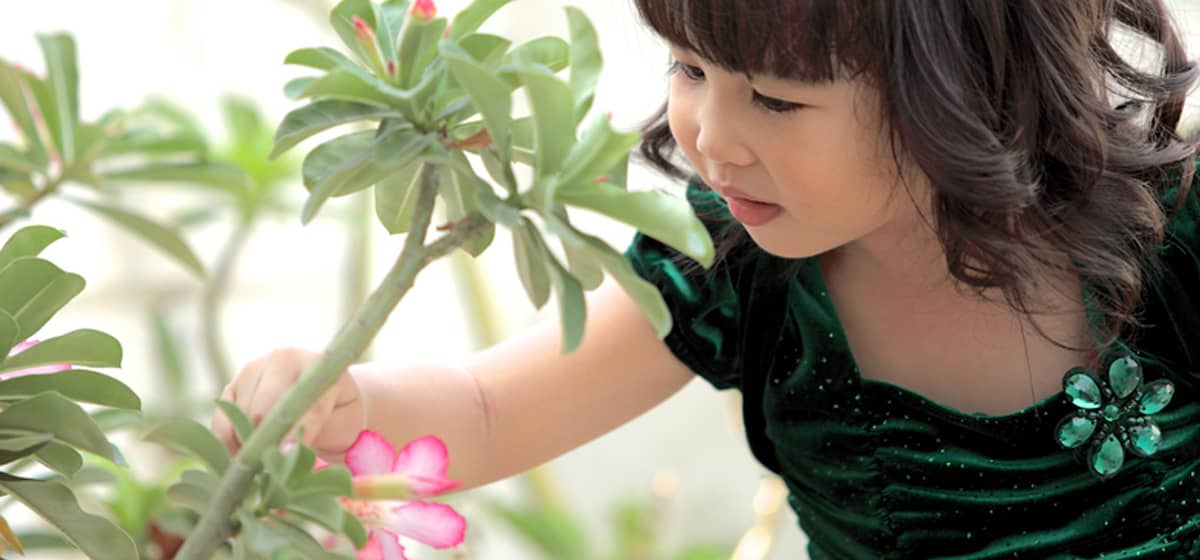
Today, Singapore is one of the greenest cities in the world, safeguarding more than 7,800 hectares of green spaces. The Garden City we enjoy today is a result of decades of hard work by our forefathers, including our then-Prime Minister Lee Kuan Yew. Known as the “Chief Gardener of Singapore”, Mr Lee introduced the “Garden City” vision in 19671, just two years after the country gained independence, with the aim to transform Singapore into a vibrant city with abundant lush greenery. This formed the core of our greening journey and the foundation in which our City in Nature2 vision, a key pillar of the Singapore Green Plan 2030, is built upon.
Over the past 50 years, more than a million1 trees have been planted across the island. Through such sustained efforts, our little red dot today boasts over 2,2003 plant species with a myriad of native flora and fauna thriving in these nature spots.
This Chinese New Year, we partnered with the National Parks Board (NParks)’s Garden City Fund to launch four exquisitely designed red packets spotlighting our native flora. With this initiative, we aim to build greater appreciation and conservation awareness among Singaporeans for our local blooms while encouraging the exploration of the abundant nature spaces in Singapore.
Each blossom featured on our red packets this year has its own unique story, and we’re excited to share more about them today while introducing a few of our other native species which you can keep an eye out for during your next hiking adventure!
1. Rose Myrtle (Rhodomyrtus tomentosa) in Coney Island Park
This beautiful magenta pink flower makes its home along the sandy beaches of Singapore’s Coney Island and thrives on the sunny weather we enjoy in Singapore. Resembling Japan’s famed cherry blossoms when in full bloom, the Rose Myrtle also produces a velvety fruit that serves as sustenance for many bird species, caterpillars, moths, and even humans!
This versatile fruit is used for a range of purposes including sweets such as jams or tarts4 and even medicines4 to treat stomach ache and diarrhoea. In Vietnam, the locals also ferment the fruit to make a type of Vietnamese wine4 known as ruou sim.
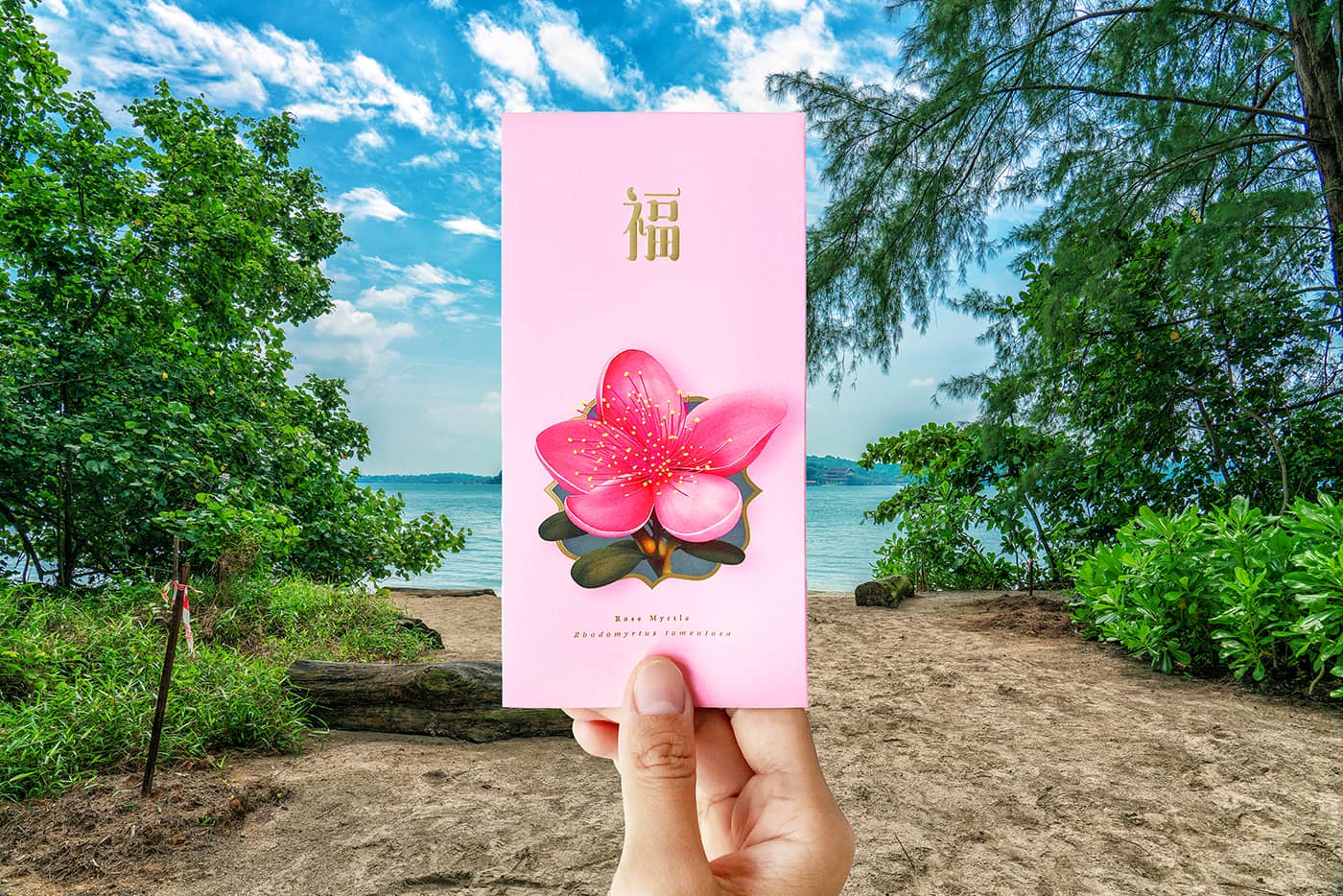
Besides the Rose Myrtle, Coney Island is also home to a variety of native flora given its recent habitat enhancement programme that aims to reforest over 50 different native coastal species5. Many of these reintroduced species are nationally critically endangered plants such as the small-leaved Nutmeg5 (Knema globularia), Silver Bush5 (Sophora tormentosa), and Damak-damak Tahun5 (Scolopia macrophylla), a tree which was presumed to be extinct until its rediscovery in 2014!
Till date, Coney Island is the only place in Singapore5 where the Damak-damak species can be found, thanks to sustained efforts to preserve our local natural heritage so do keep a look out when you head down for a day of exploration!
2. Derum (Cratoxylum maingayi) in Windsor Nature Park
A slow-growing deciduous tree that can reach a whooping height of 30 metres6, the Derum can be found at the heart of Windsor Nature Park – one of Singapore’s newer green spaces. The tree produces a faintly fragrant flora that ranges from eye-catching crimson to an interesting combination of pinkish-yellow.
While not commonly available, the Derum’s durable timber6 can be used in construction and furniture-making. Unfortunately, due to the time needed for the Derum to mature completely, the tree has been classified as a critically endangered7 species in Singapore.
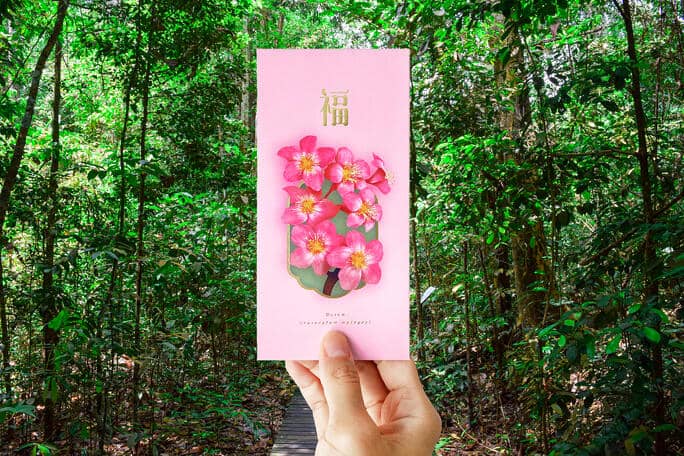
However, if you’re hoping to catch a glimpse of this rare gem during your next visit to Windsor, just look out for a pop of reddish leaves against the otherwise uniform green landscape of other trees. A conspicuous feature, the young leaves of the Derum tree are notably reddish7 before maturing into a deep forest green.
What’s more, keep your eyes peeled at Windsor’s Hanguana trail for some rare native plants that are named after Singapore such as the Zingiber singapurense8 and Durio singaporensis8. Over the years, the replanting of over 4008 trees in the park, including a myriad of native species, has helped to enhance the habitat of Windsor. This in turn has helped in attracting and protecting our local fauna including native animals such as our Sunda Pangolin (Manis javanica)8 and the Mangrove Snake (Bioga dendrophila)8, which contributes to the biodiversity of the ecosystem.
3. Akar Kekapal (Hoya diversifolia) in Pulau Ubin
Another critically endangered9 native plant, the Akar Kekapal is an epiphytic climber that often forms a dense covering on tree branches that they grow on. Resilient9 to a wide range of environmental factors, the plant can be found growing on mangrove trees in Pulau Ubin and even on oil palm in neighbouring Malaysia.
Its flowers9 often grow in umbrella clusters, forming a bouquet-like arrangement of star-shaped cream and pink blossoms that are stunning and fragrant to the senses.
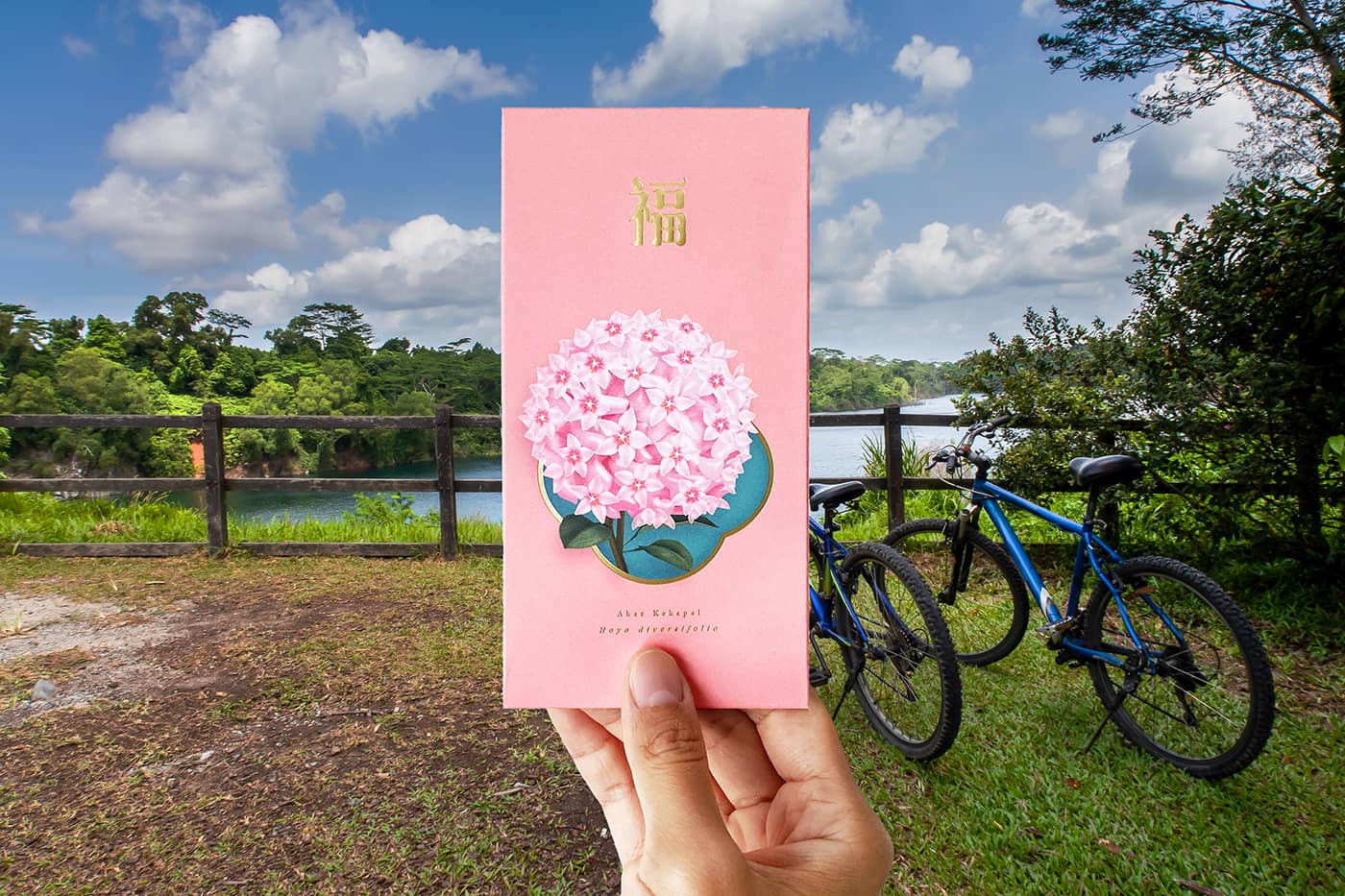
If you’re on a quest to spot as many native plant species as possible, Pulau Ubin is the right place to be! In addition to the unique Akar Kekapal flowers, keep a look out for its abundance of local plants including the Ficus stricta10, a rare species of the strangling fig, and the Jamba (Neuwiedia veratrifolia)10, a yellow orchid that is critically endangered. According to NParks, it estimates that Pulau Ubin has over 78611 native plants, with many of them very rare and not found on mainland Singapore!
As the host to the largest mangrove areas in Singapore, Pulau Ubin is also home to one of the rarest mangrove species in the world – the Eye of the Crocodile10, otherwise known by its scientific name of Bruguiera hainesii. There remains only about 200 of these plants worldwide, with 11 of them found in Singapore.
4. Wild Rose Apple (Syzygium pycnanthum) in Central Catchment Nature Reserve
Finally, the last (but not least) of our four flowers – the Wild Rose Apple an attractive and showy species with unique flora features. Similar to the Akar Kekapal, the Wild Rose Apple is tolerable12 against strong sunlight, high wind and frequent salt spray conditions; and can be found at the Central Catchment Nature Reserve and Pulau Ubin12. Both its flowers and fruits are edible and serve as food to many bird species.
The Wild Rose Apple is also classified as one of Singapore’s critically endangered12 plants, joining the list of species that NParks is on a mission to conserve.
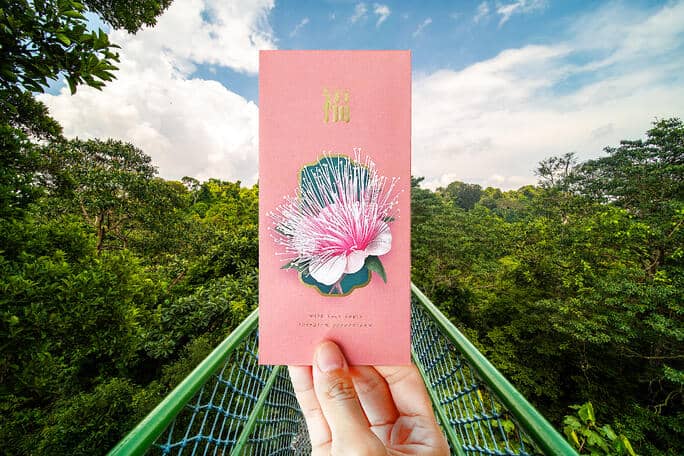
Besides the Wild Rose Apple, the Central Catchment Nature Reserve is also home to a wide range of native wildlife such as the Keruing13 (Dipterocarpus spp.), Colugo14 and the elusive Raffles’ Banded Langur15. It is believed that there are only 6015 langurs left in Singapore, limited to the Central Catchment Nature Reserve – this means that the chance of spotting one is extremely rare so do keep an eye out for it!
As the largest of nature reserves, the Central Catchment Reserve is also known as the “green lung” of Singapore and is a popular spot for nature lovers!
Fun fact: it also features the only freshwater swamp forest found in Singapore – the Nee Soon Swamp Forest16 – so do head down to check it out!
We hope that these lesser-known facts have intrigued your interest and if you’d like to win yourself these red packets, take part in our social media contest on Facebook and Instagram where you simply have to tell us your favourite local nature park and the reason why.
Two lucky winners will even walk away with a year worth of free electricity with Power Eco Add-on, Singapore’s first and only customisable green add-on for an electricity plan, plus a set of Limited Edition Geneco Red Packets! 50 lucky winners will also get to receive 2 sets of red packets and $28 eCapitaVouchers!
So what are you waiting for? Lace up your walking shoes and explore the various green spaces that Singapore has to offer.
Together, let’s continue to #PowerTheChange and conserve our natural biodiversity, and share our prosperity with our future generations as we build our City in Nature!
References:
- (2015, March). National Library Board, “Garden City” Vision Introduced
- (2021, October 8). National Parks Board, Singapore, a City in Nature.
- (2016). National Parks Board, Natural Heritage: 10 Native Plants of Singapore.
- (2021, October 14). National Parks Board, Rhodomyrtus tomentosa (Aiton) Hassk.
- (2017). National Parks Board, Working Together to Enhance the Native Coastal Habitat at Coney Island Park.
- (2021, August 6). National Parks Board, Derum.
- (2021, October 14). National Parks Board, Cratoxylum maingayi Dyer.
- (N.D.). National Parks Board, Windsor Nature Park.
- (2021, August 19). National Parks Board, Hoya diversifolia Blume.
- (N.D.). National Parks Board, Media Factsheet B.
- (N.D.). National Parks Board, A Treasure Trove of Biodiversity.
- (2021, October 14). National Parks Board, Syzygium pycnanthum Merr. & L. M. Perry.
- (2021, October 14). National Parks Board, Dipterocarpus caudatus (Foxw.) P.S.Ashton subsp. Penangianus.
- (N.D.). National Parks Board, Mammals Native to Singapore.
- (2020). National Parks Board, Introducing Our Elusive Wild Neighbours.
- (N.D.). National Parks Board, Central Catchment Nature Reserve.
Image Credits: Nylon Coffee Roasters
Source: The Sustainability Project
Looking back at 2021 with Geneco
- Home
- Articles Posted by (
- Page 4 )
[Post Date]
Looking back at 2021 with Geneco

Entering into the second year of the pandemic, 2021 has come with its own set of challenges. While the year has been about continuous adapting and living with the new norms amid these Covid-19-related conversations, the topic of climate change has come to the fore, buoyed by the freshly unveiled Singapore Green Plan 2030 and recently concluded 2021 United Nations Climate Change Conference (COP26).
It is heartening to see governments, businesses and individuals alike coming together to make a difference for our planet Earth. Regardless of seemingly small actions like bringing our own reusable containers for takeaway meals or national-level movements of setting Singapore’s green targets, we believe that each effort counts in making a collective difference.
Looking back at 2021, Geneco have also rallied our communities and partners to do good for our environment as we continued to build upon what we’ve achieved in the past year. The year has no doubt been fruitful for us as we kept true to our mission to #PowerTheChange. As the year comes to a close, let’s take a look back at some of the milestones we’ve achieved together with you.
Chinese New Year Red Packet Recycling Bins
We kicked off 2021 with the exciting launch of our inaugural Used Red Packet Recycling Initiative. In partnership with like-minded local brands such as CRU, IUIGA, Tay Paper Recycling, and one of our Changemakers – Refash, we deployed 28 recycling bins across Singapore to encourage the public to drop off their used red packets and make a difference for our rainforests by recycling and reducing our paper waste. These red packets were then sent to Tay Paper Recycling to be pulped and made into other paper products.
We were truly heartened by the overwhelming response from the nation, with more than 410kg of red packets collected in less than a month! As Singaporeans remain eco-conscious even amidst the festivities, we look forward to keeping this tradition alive and continue making a difference for our planet in 2022.
Geneco’s joins NParks’ #OneMillionTrees – Plant-A-Tree Programme
As part of Singapore’s plan to transform our country into a City in Nature, the government has committed to planting a million trees across our island over the next decade. These trees play an important role by serving as natural filters and adding to the lush greenery we enjoy in Singapore. At the same time and most importantly, they contribute to strengthening our country’s resilience towards climate change.
Achieving this ambitious goal of one million trees requires contributions from both the public and private sector. As such Geneco has pledged to plant 250 trees over the next five years and is proud to be doing our part for this nationwide effort.
Our plan was set into motion on Earth Day (22 April) this year at Windsor Nature Park, where we planted our first 50 trees together with our Changemakers – Comcrop, Cultivate Central, The Food Bank Singapore, Green Nudge, Refash and Repair Kopitiam – as well as like-minded corporate partner Standard Chartered Singapore.
On the very same day, we also launched our new comprehensive and integrated solar panel solution – the Power Eco Total Home Solution, for landed residential homes..
These mark another of our many green efforts as we contribute to Singapore’s goal to becoming a greener and more sustainable city.
Powering Change with our #ChangeMakersSG
Throughout the year, we were honoured to also continue strengthening the bonds with our #ChangeMakersSG partners while giving back to the communities and furthering our green message.
In the midst of 2021 when the nation went into Heightened Alert once again for Covid-19, many organisations were impacted and our Changemaker – The Food Bank Singapore – was no exception.
In a bid to increase their delivery efforts and distribute 1,500 food bundles to their beneficiaries, Geneco rallied for support from our social media family, and together, we prevented more than 6,700kg of food from being wasted.
And as the nation moved forward with the ease of safety measures in July, we partnered with And as the nation moved forward with the ease of safety measures in July, we partnered with Refash and join in the global #PlasticFreeJuly movement, to encourage everyone to #PowerTheChange and reduce their single-use plastics.
By contributing 1,300 Geneco tote bags to Refash’s outlets, customers could redeem these tote bags for free instead of opting for plastic bags with any preloved item purchased.
Through such sustained efforts, we hope to inculcate greater awareness towards the harmful effects of plastic waste and inspire individuals to take a step towards a #PlasticFree future!
Go Green Your Way with Power Eco Add-on
In celebration of our nation’s birthday on 9 August, Geneco launched our Power Eco Add-on, Singapore’s first-and-only green add-on for electricity plans.
To show our commitment towards our country’s sustainability efforts and the SG Green Plan 2030, Power Eco Add-on was conceived to encourage and ease Singaporeans in embarking on a journey towards building a greener home.
With its affordable yet flexible offering where customers can choose from different levels of green – 25%, 50%, 75% or 100% – and between Carbon Credits (CC) or Renewable Energy Certificates (REC) for their electricity plan, we hope to empower our customers to #gogreenyourway and make a difference for the environment.
We were truly heartened and encouraged by the response received within a month of the Power Eco Add-on’s launch. As we look towards the new year, we hope to continue being the catalyst towards inspiring individuals to opt for greener alternatives.
The Jolly season to be Green
Topping off these initiatives, we also encouraged Singaporeans to embark on a green journey with monthly giveaways on our social media platforms, with two exclusive giveaways for 2,000 Geneco customers on 11.11 and 12.12 in celebration of the year end #JollyGreen season.
In total, we have distributed over 6,000 eco-friendly lifestyle items that include Microgreen Kits, Sprout Plantable pencils, 100% recyclable foldable umbrellas, collapsible water bottles, reusable straws, grocery net bags and more.
Through these green giveaways, we aim to inspire everyone to make a meaningful change for our environment in the long-term.
2021 has truly been a fulfilling year for Geneco despite the continued uncertainty faced around the world.
These milestones could not have been achieved without your support and we’d like to thank each of our #ChangeMakerSG partners, communities and families for your confidence in us.
As we look ahead into 2022, let’s continue to #PowerTheChange for a greener and more sustainable future.
Before we end off, here’s a quick recap video on our green milestones for 2021:
From our Geneco family to yours, here’s to a greener and better 2022!
5 Eco-friendly gifts for your loved ones this holiday season
- Home
- Articles Posted by (
- Page 4 )
[Post Date]
5 Eco-friendly gifts for your loved ones this holiday season
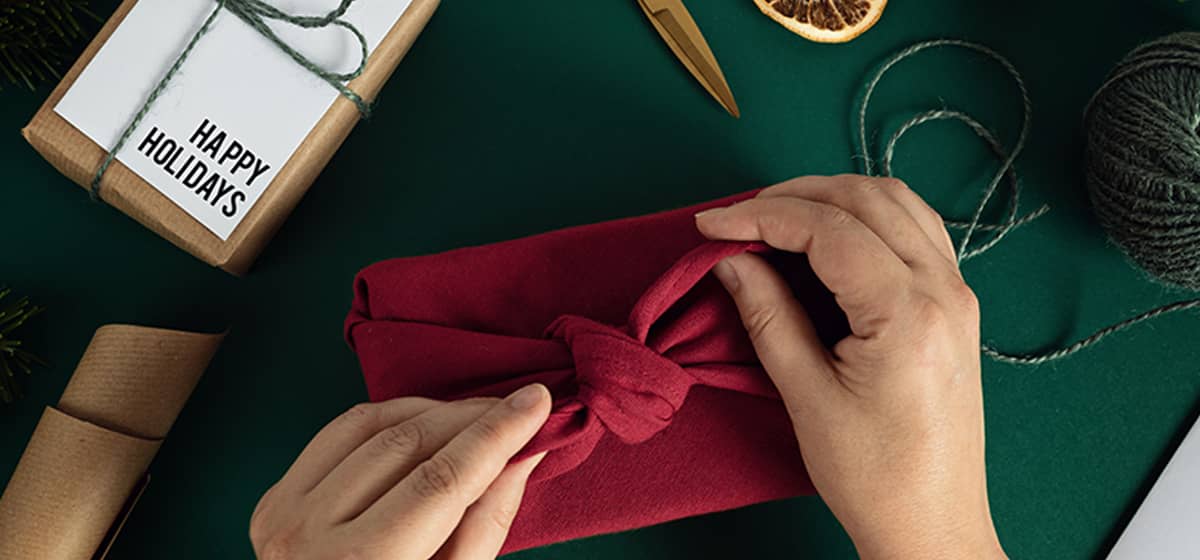
‘Tis the season to be jolly!
As we enter the most wonderful time of the year, it’s time to embark on our holiday ritual of family gathering, feasting and the best part – unwrapping of presents! While the possibilities are endless, we all know how stressful it could be when it comes to shopping for thoughtful and unique gifts for our loved ones.
Instead of purchasing the usual chocolates or coffee mug, how about thinking out of the box with eco-friendly gifts that are meaningful and good for the planet? To spread the green message this #JollyGreen season, we’ve come up with some sustainable gift ideas that are perfect for anyone you may have in mind – whether it’s your other half, your child or even your parents!
1. Beeswax Wrap
A colourful and fun replacement to single-use plastics such as clingwrap and zip lock bags, beeswax wraps are one of the latest trends in reducing waste in our homes. Made from cotton fabric and infused with pure beeswax, organic coconut or jojoba oil and tree resin, these wraps are perfect for covering a bowl of leftovers, wrapping sandwiches or even to hold fresh fruits and vegetables.
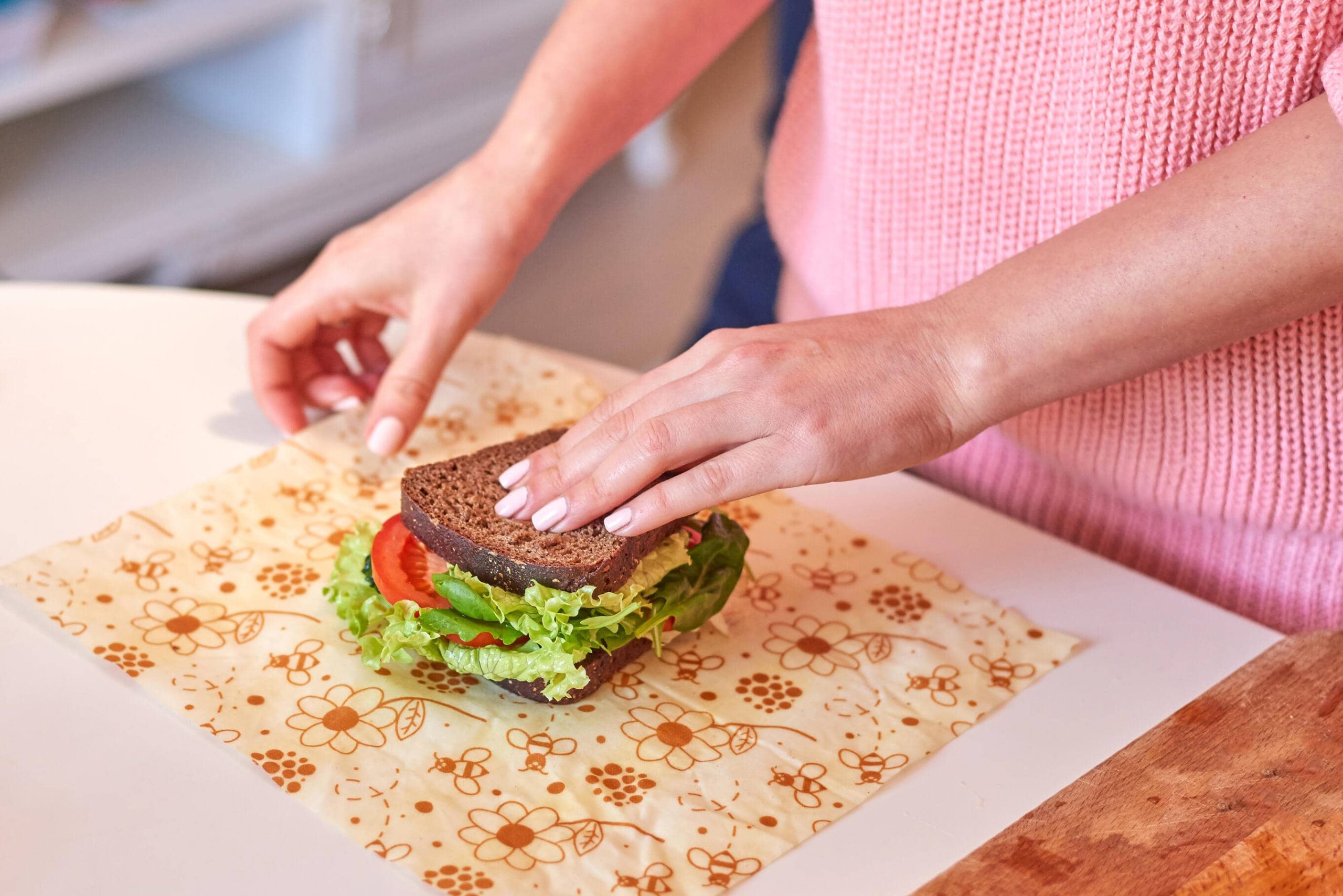
Besides having antibacterial properties that help keep our food clean and free of germs, beeswax wraps also locks in the moisture of our food to retain its freshness and flavour. In contrast, plastic wraps typically suffocate our fresh produce leading to condensation and mould forming in the bag. When this happens, it hastens the decomposition of our food and results in food waste.
Available in a myriad of designs and sizes, check out these stylish beeswax wraps at our local green brands such as Your Sustainable Store, Minimakers and The Sustainability Project.
2. Jar of Christmas Spiced Nuts
Instead of gifting the typical box of Christmas sweets packed in plastic boxes and wrappers, how about making your own festive spiced in a beautiful glass jar for a thoughtful and delicious gift! Nuts such as almonds, cashews and pecans are highly nutritious and loaded with antioxidants – a great option for your loved ones as a yummy midday snack.
Some of our favourite recipes include Jamie Oliver’s honey-roasted nuts and these maple cinnamon spiced pecans that remind us of our favourite Christmas sweets. These recipes are also a breeze to prepare – great if you’re looking to involve your kids in your Christmas preparations!
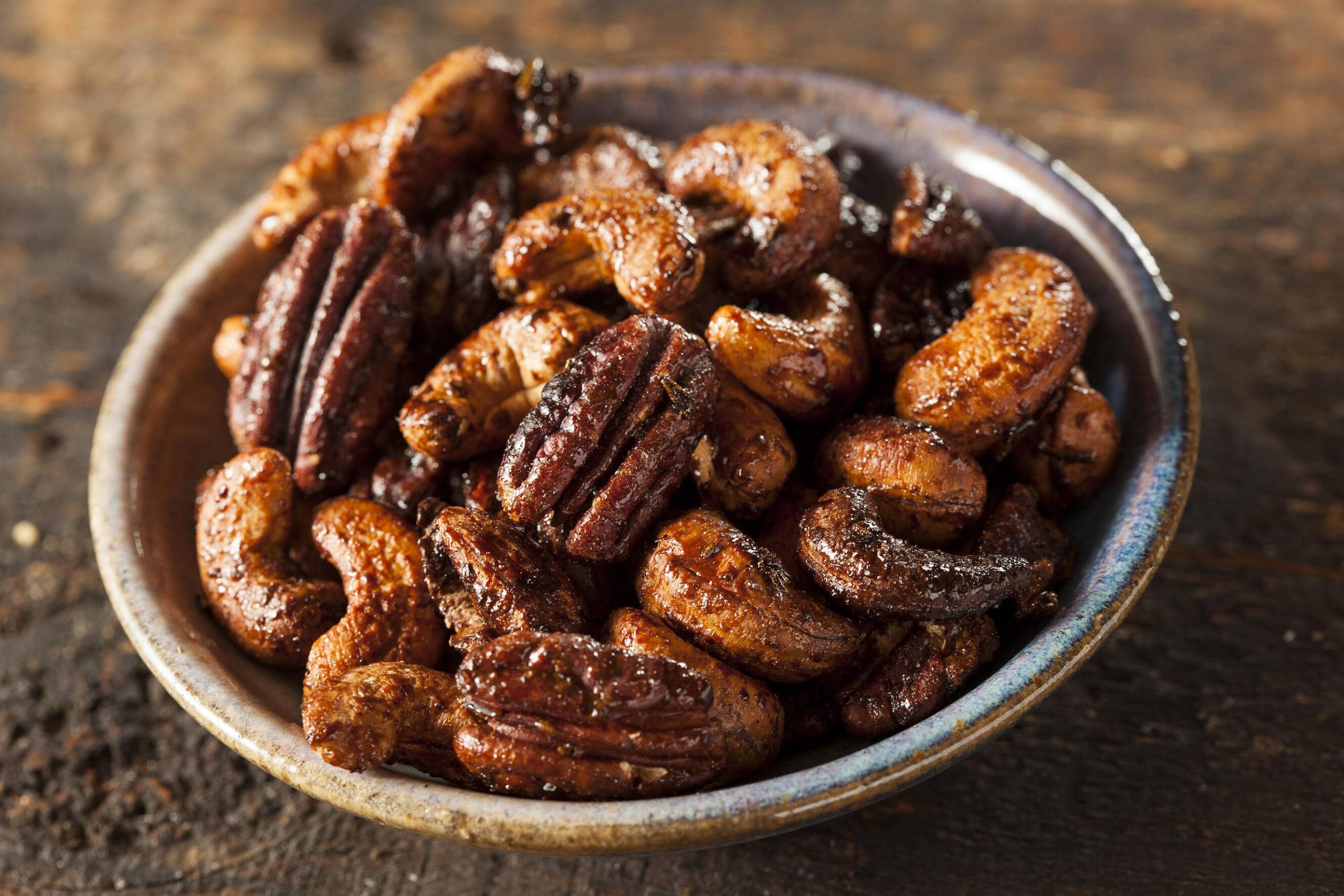
What’s more, with these glass jars, you can also encourage your loved ones to reuse them for storing other foods or even repurpose it as a mug or vase. This gift also serves as a great conversation starter to encourage them to visit zero-waste grocery stores and fill up their empty jar with the mouth-watering goodies available. Some of our favourite stores include Scoop Wholefoods, an Aussie-owned supermarket that can be found in multiple locations like Tanglin Mall and Great World City, and Unpackt, a homegrown social enterprise that offers an array of delicious snacks such as its Zesty Maple Glazed Nut Mix.
3. Edible Indoor Gardening Kit
Have someone in mind who enjoys putting meals together at home? An edible indoor gardening kit might be just the perfect gift for them! Besides bringing a pocket of green into their homes, these nifty gardening sets can also bring a splendid harvest and help your loved ones embark on a more sustainable food journey.
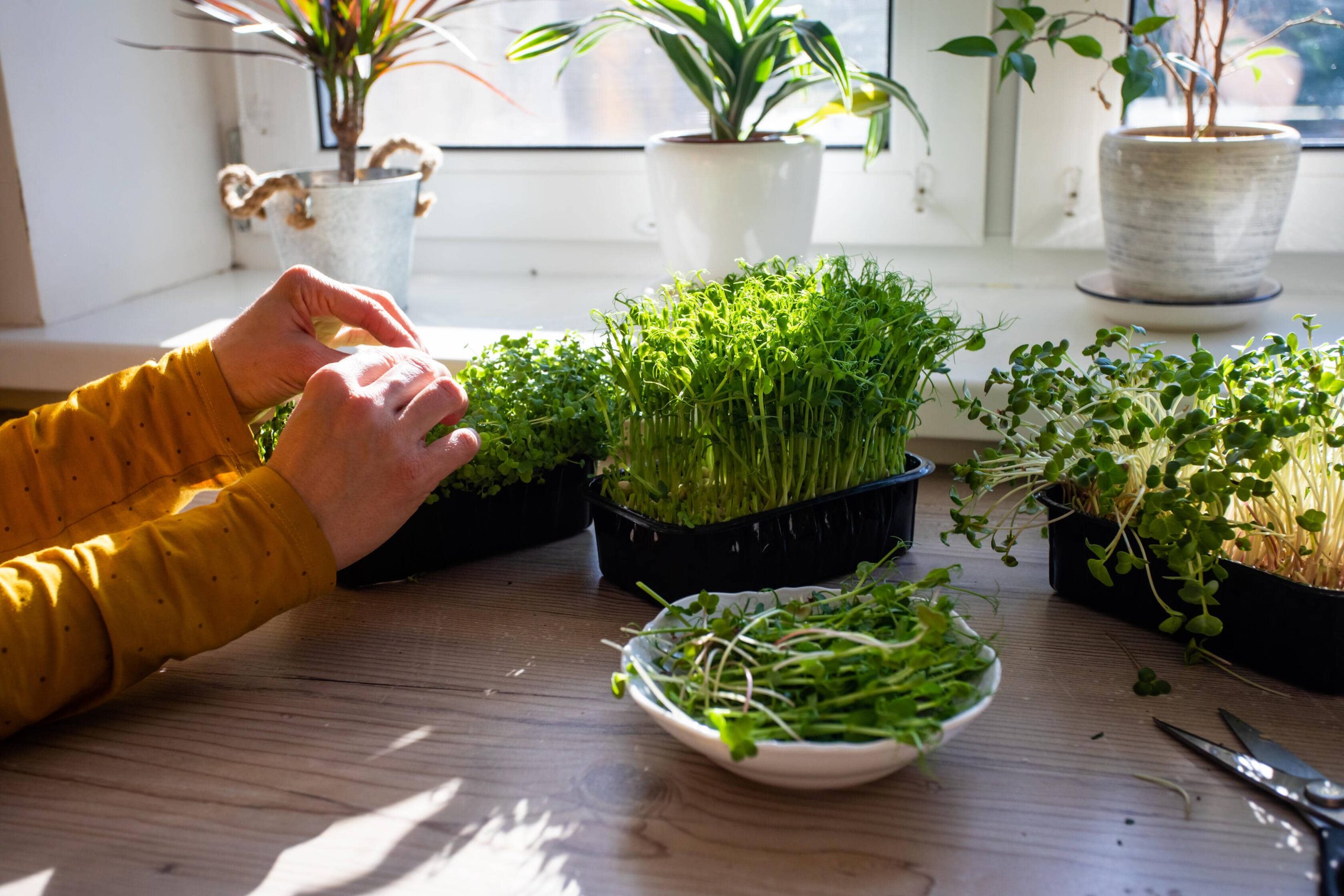
Best of all, these kits are easy to use even for those who have had zero experience in gardening! Available in a variety of options such as Basil, Kang Kong and Chye Sim, these planting sets are a gift that keeps on giving, and in a nutritious way too!
Check them out at our local brands like Root Farm and Super Farmers, where they offer microgreens sets that can easily be grown in small spaces (perfect for HDB dwellers) and only takes a week to harvest!
Gift the gift of experiences
While the above presents can certainly be meaningful, gifting an experience can also be equally or even more special! In addition to creating lasting memories with your loved ones, gifting an experience is also usually more sustainable as there is no physical gift that requires additional wrapping or packaging, thus eliminating unnecessary paper or plastic waste.
4. Treat your loved ones to a zero-waste spa session
Instead of going to the spa, where products used typically contain chemicals that are bad for the environment, how about transforming your home into a blissful sanctuary and indulging your loved ones in a zero-waste pampering routine? Best of all, you can even join in and get some much-needed TLC as we wrap up the year!
Step 1: Set the Mood
Light a scented candle like this one from Pass It On. These candles are not only made from eco-friendly materials but encourages zero-waste practices by allowing you to repurpose your empty candles into planting pots. They even come with seed paper for you to sprout a modest produce after!
Step 2: Mix your very own concoction of homemade avocadoes hair and face mask
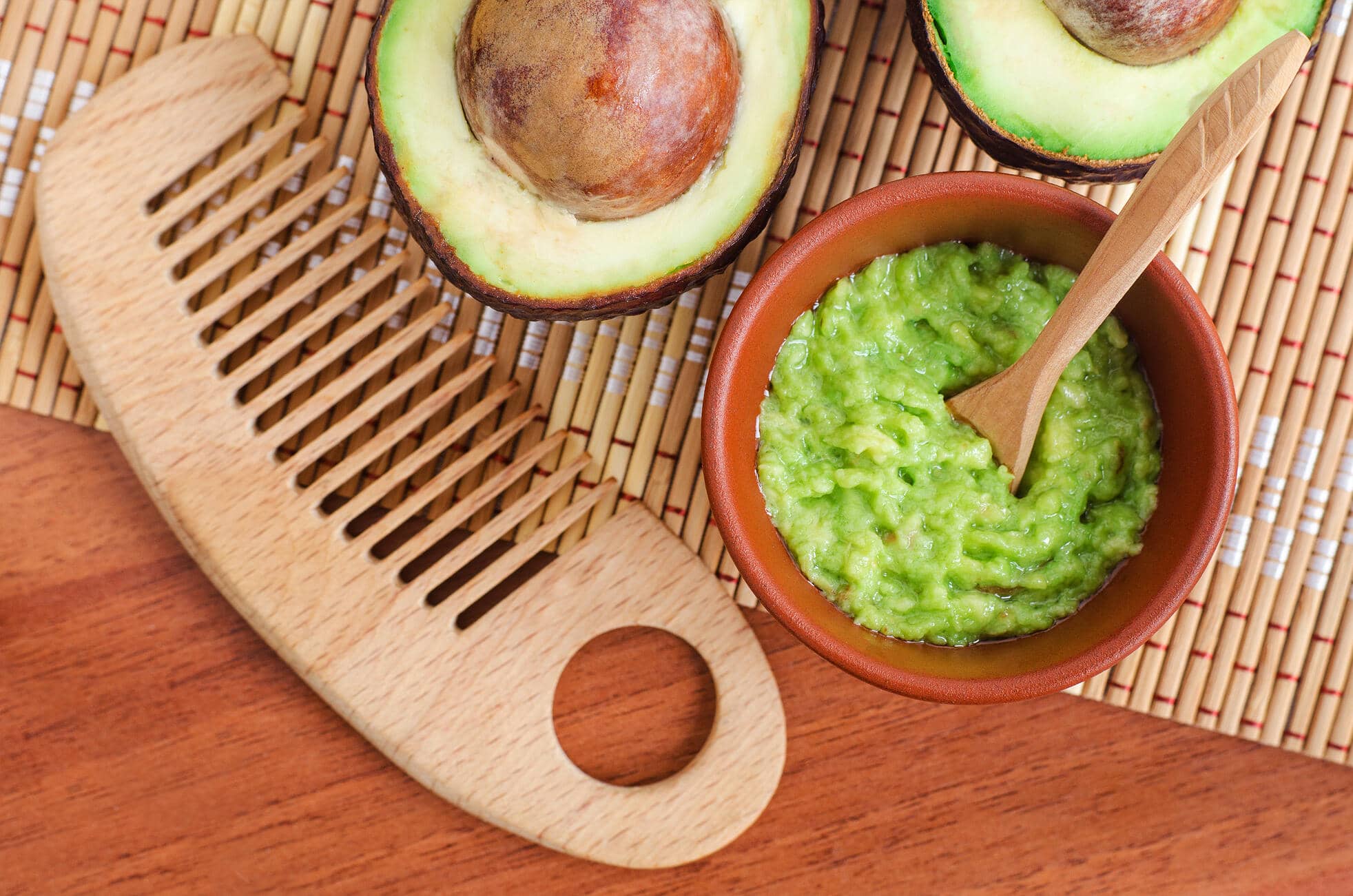
Mix your very own concoction of homemade avocadoes hair and face mask for that au naturel experience. A buttery fruit that is rich in vitamins, avocadoes are extremely nourishing as they not only high levels of minerals that would keep our loved ones’ hair smooth and shiny, but also compounds that help to protect their skin from sun damage – especially useful given that we live in sunny Singapore!
For a hydrating hair mask to lift those dull strands, mash an avocado with two ripe bananas. If you like to bring it up a notch, drip a few drops of rosemary and tea tree oil for that soothing scent. Then, slather the mixture from the tips of your loved ones’ hair and working your way up to their scalp, leaving it on for a good 20 minutes before rinsing off thoroughly.
And for a purifying mask to brighten up your skin, pit half a ripe avocado, add a tablespoon of solid coconut oil, and a teaspoon of honey and water. Gently massage this creamy concoction on their face and leave it on for 15 minutes to absorb all the nutritious goodness. While the avocado moisturises the skin, the honey and coconut oil can help to fight minor acne and inflammation.
Step 3: Rejuvenating body scrub experience
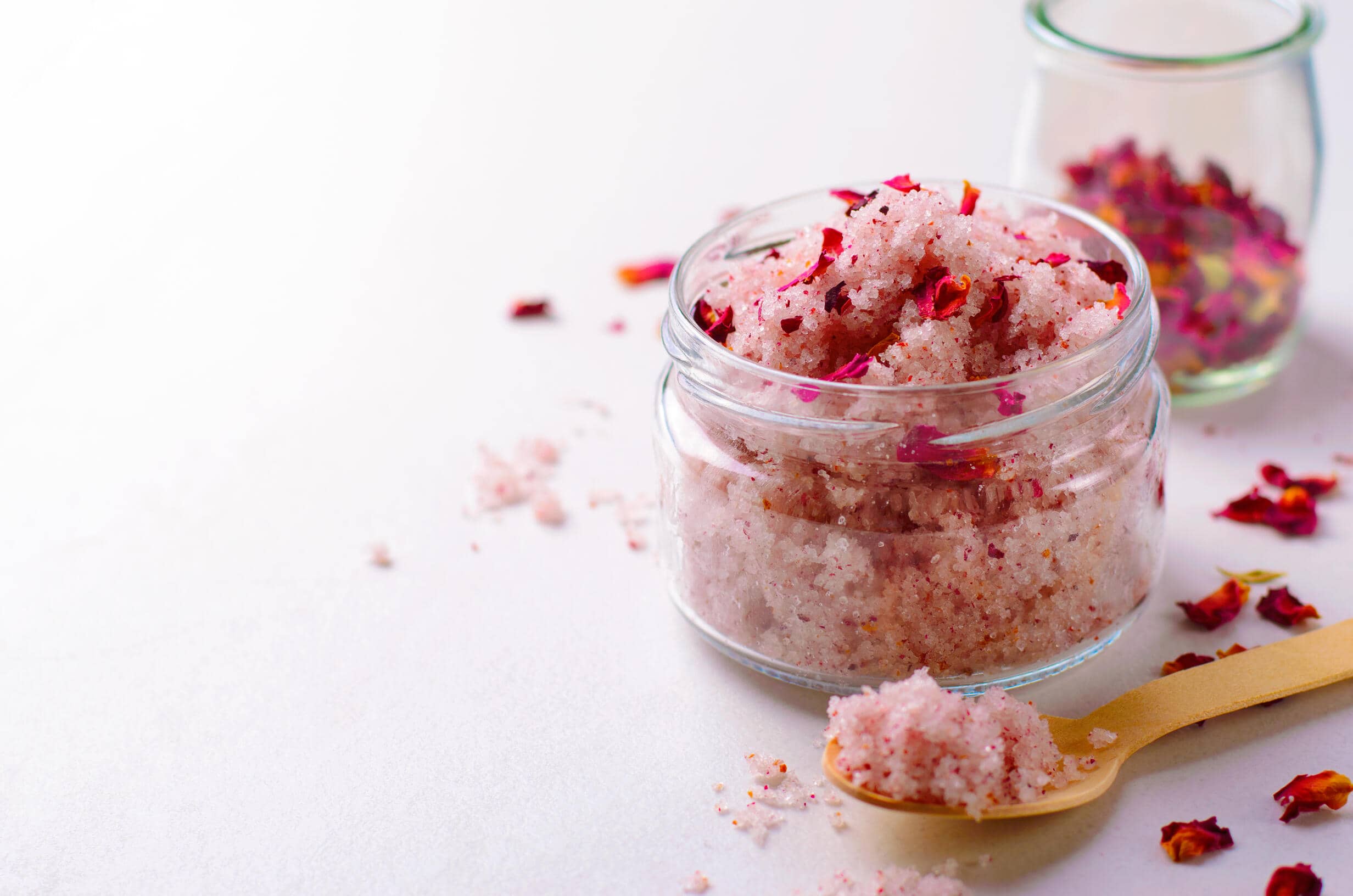
Finally, give them a full rejuvenation with a natural homemade sugar scrub that can easily be put together with ingredients found in your kitchen in less than 10 minutes. Simply combine equal portions of brown sugar and coconut or olive oil, mix them thoroughly and voila; you’re done!
For those of us looking to gift a more luxurious experience, our Changemaker Cultivate Central has the perfect recipe right here that is infused with floral botanicals like Citonella, Lemon balm and Globe Amaranth flowers. The wonderful scents from these herbs also provide mood lifting and stress relieving properties! Give these DIY recipes a try to make your skin feel incredibly soft and hydrated in no time.
5. Experience nature’s gifts
If you’re still looking for a great gift for your kids, how about bringing them closer to nature with an outdoor tour with EcoTrail that casts a spotlight on the everyday ecosystems in Singapore? This 1.5 hour-long guided tour includes multiple stations with activities such as chicken feeding, planting organic fruits and vegetables, and even learning about how solar plants and incubators work! Immerse yourself in the beauty of our local nature and relish the fresh air, lush greenery and clear blue skies in this private farmland – it’s a great gift to quench the curious minds of our little ones while showing them the beauty of our Mother Nature.
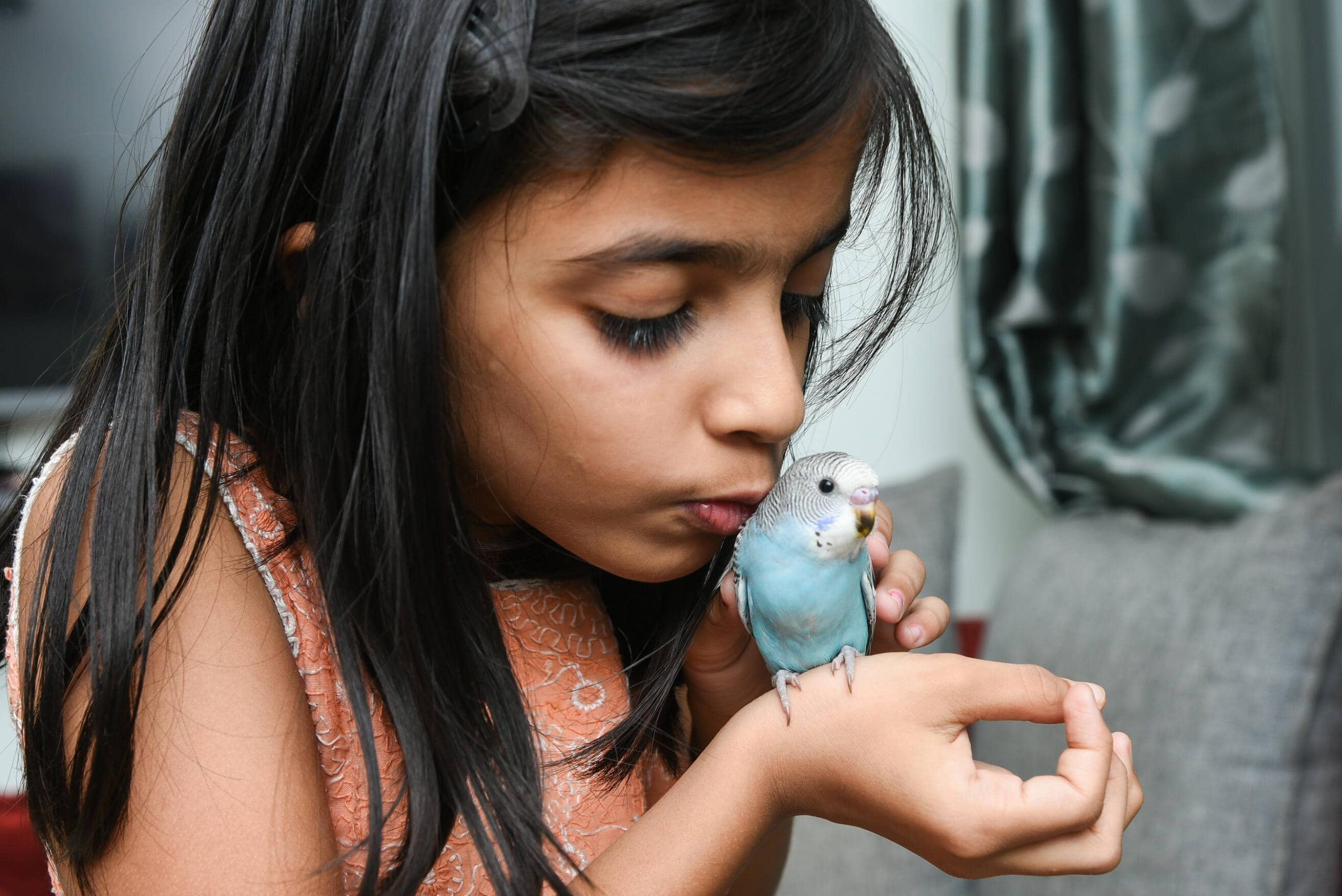
Alternatively, check out The Sundowner’s rooftop farm experience that is great for adults and children alike. Enjoy an organic farming class where you learn all the secrets of creating a healthy soil for the freshest harvest, come up close and personal with honeybees, and delight in a farm-to-table honey tasting to round it all up! Best of all, take in the beautiful sunset as you enjoy this one-of-a-kind rooftop experience in Singapore. This is one hidden gem that will be the perfect gift for any loved one!
This holiday season, go beyond embarking on your own green journey to encourage your loved ones to take the first step. Be it a physical gift or experiences, what matters is the thought that counts!
Here’s wishing you and your loved ones a merry and #JollyGreen holiday!
Image Credits: Nylon Coffee Roasters
Source: The Sustainability Project
How to make your own tea blend
- Home
- Articles Posted by (
- Page 4 )
[Post Date]
How to make your own tea blend

Tea is the most popular beverage in the world, placing ahead of other well-loved beverages such as juices, beer and even coffee. This is unsurprising since there is a tea perfect for every occasion – whether an English Breakfast as a perk-me-up in the morning or a calming chamomile as part of your nightly wind down routine.
Besides being as a tasty drink to sip on, tea is also known for offering plenty of health and wellness benefits. According to HealthHub, tea contains high antioxidant levels which helps in high antioxidant levels which helps in reducing the risk of cardiovascular disease.
In addition, studies have also shown that teas can help in boosting our immune system, fight off inflammation and even minimise the likelihood of cancer and stroke.
For those of us weary and stressed from working from home, brewing a quick cup of lavender or mint tea can also introduce a little pocket of zen into our daily routine and serve as a great stress reliever!
However, while you can easily purchase tea blends from stores, high quality tea blends may be relatively costly. Some manufactured blends may even make use of artificial flavourings, which may be bad for our health in the long run.
The many benefits of making your own tea blend
Instead of buying pre-packaged tea, how about choosing to make your own custom tea blend? By purchasing loose tea leaves and herbs, it not only ensures a fresher and more robust taste but also promises for you to benefit from its higher nutritional value.
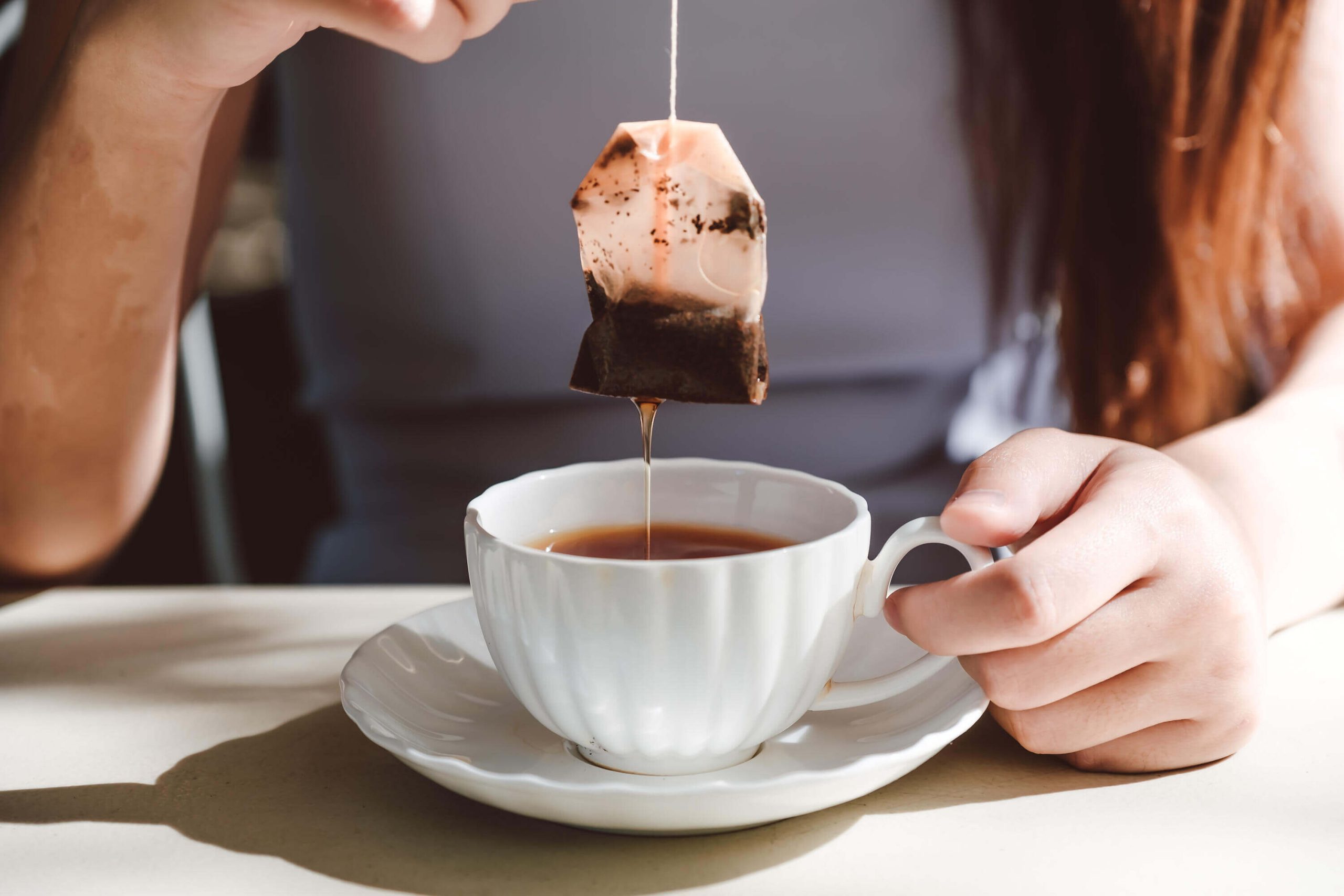
Beyond the taste and health advantages, brewing tea from loose leaves is also better for the environment! Often, teabags contain a small amount of plastic as manufacturers aim to enhance the durability of tea bags in hot water. When seeping our teabags, these micro plastics get broken down where we end up consuming them. Over long periods of time, this may result in many health issues. With its plastic contents, teabags also cannot decompose completely – just like plastic bags or plastic utensils – which makes them harmful to the environment.
So how can we make our own homemade tea blends? Here are three simple steps for you to do so, which can be easily customised to your personal nutrition goals and flavour liking. To ensure a well-balanced tea profile, each herb is measured in teaspoon proportions and can be brewed for 2-3 cups of tea.
Step 1 – Choose your blend bases
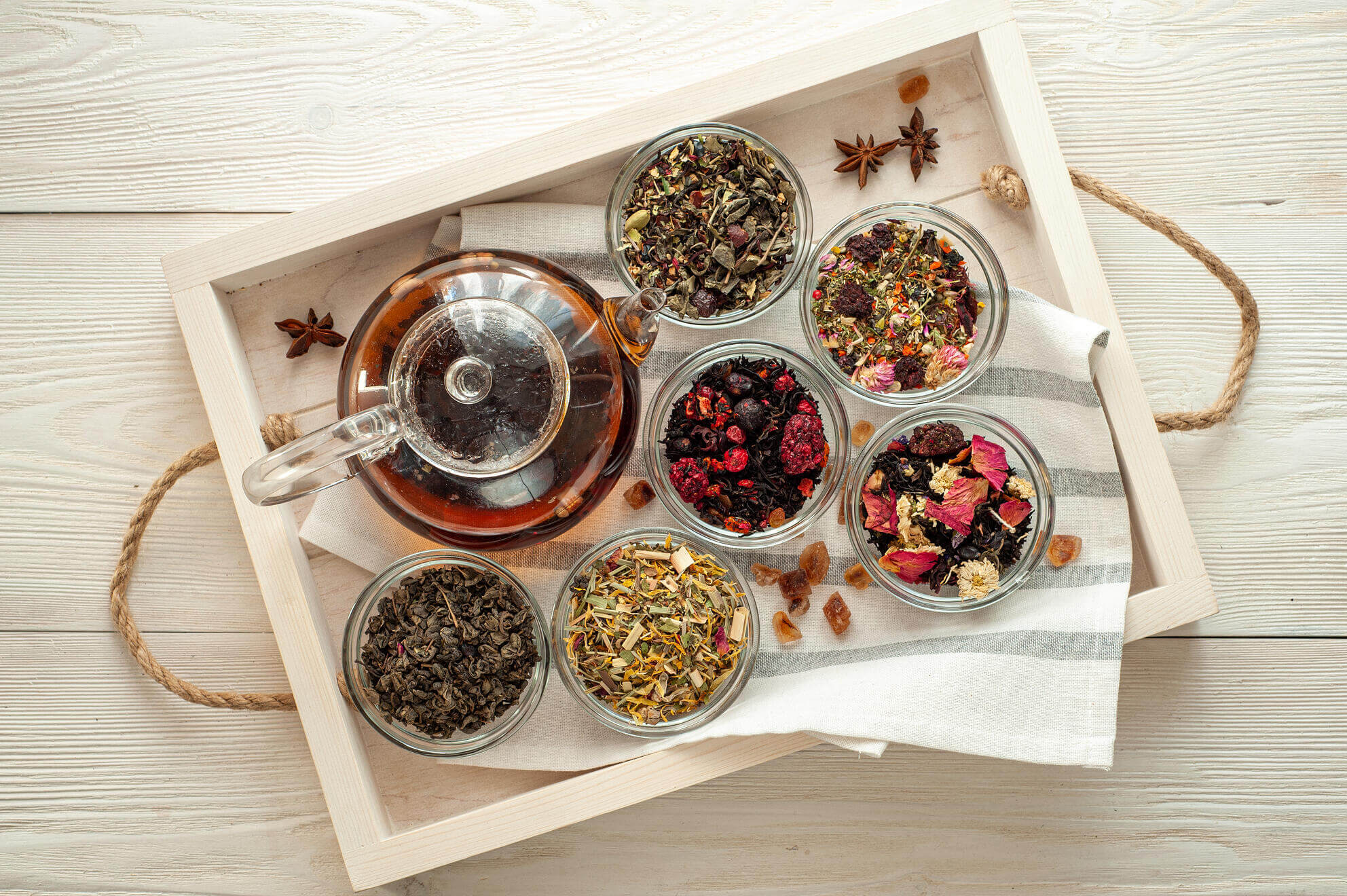
To begin, start off by identifying the purpose of your tea blend.
Are you looking to craft a blend that gives you a midday brain boost or to serve as a soothing end to your day? For those of us who experience bloating after a heavy meal, certain teas can also aid our digestion and help our bodies metabolise our food to reduce the discomfort.
Once we’ve identified the purpose of our tea, it’s time to choose the base herb! Some of the more commonly used base herbs include chamomile, which is known for its calming quality, peppermint that promotes alertness, and rosemary, which helps in improving our cognitive function. As this blend base builds the foundation of your tea, include 3 teaspoons for sufficient flavour.
Step 2 – Identify your complementary herb
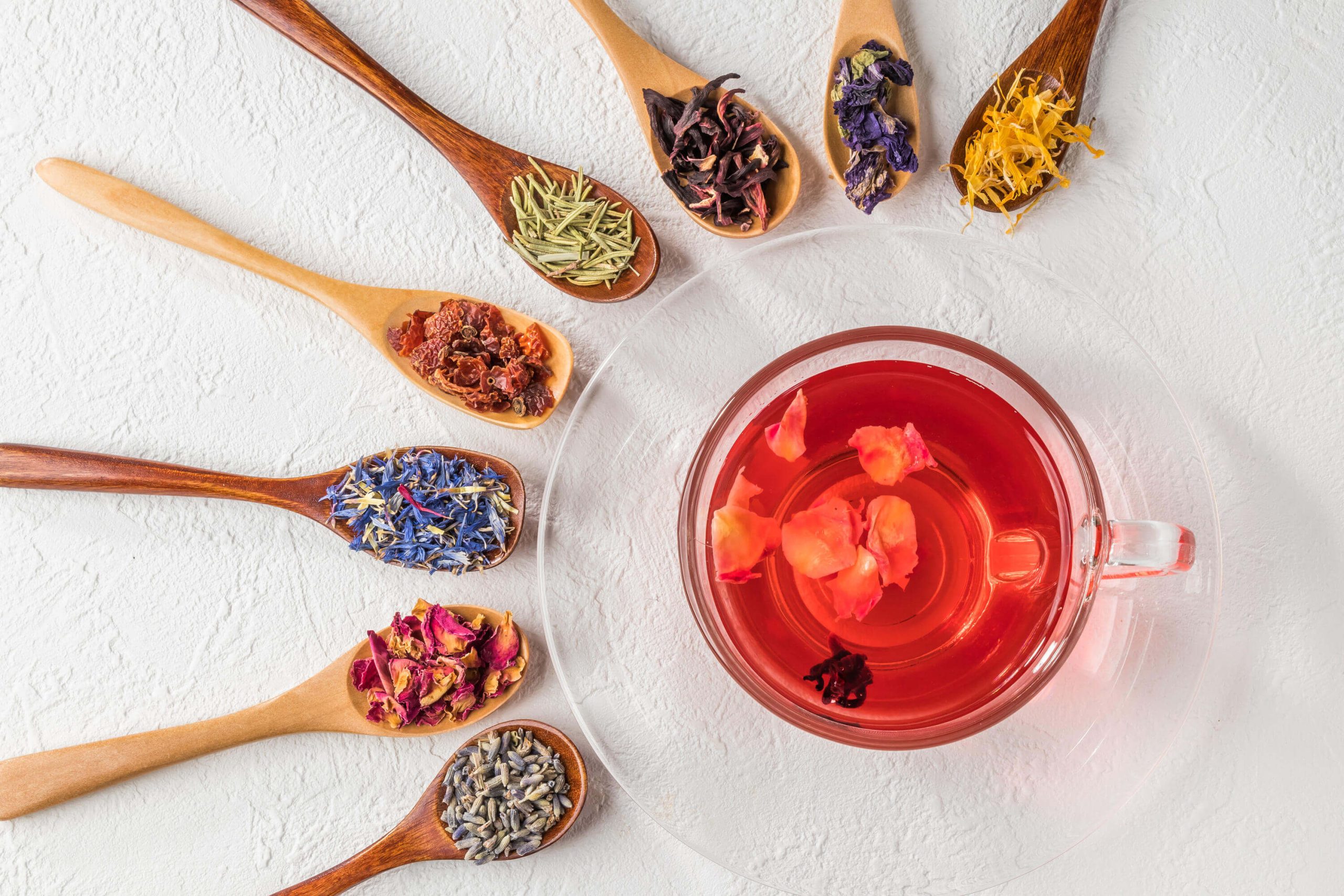
Next, you’ll need to choose your second-most dominant herb in your tea recipe. Depending on your blend’s base, this complementary herb can either help tone down the intensity of the main tea base or enhance its flavour and add to its profile complexity.
For our health junkies looking to make the most out of each cup of tea, you can also choose a complementary herb that offers additional health benefits! While there are no limits to which herbs to use as a complementary option, some of the more common choices are floral notes such as lavender, rosemary and elderberry. A few examples of this would be common favourites such as Jasmine Green Tea or Osmanthus White Tea. For this, add in 1 to 2 teaspoons into your tea blend.
Step 3 – Finish off with an accent herb
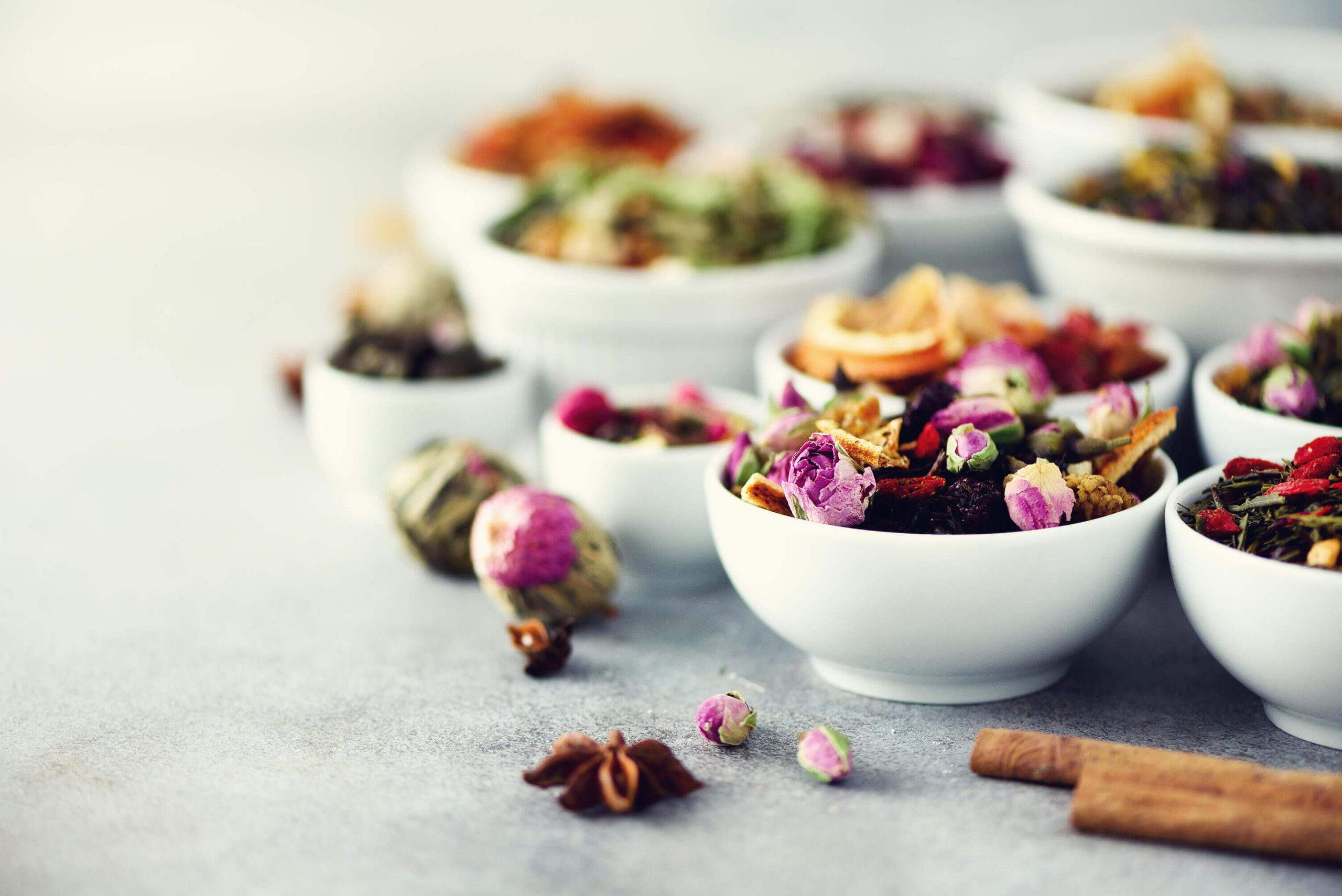
Finally, to round out the tasting notes of the first two ingredients, choose an herb that offers that delightful pop of flavour. Again, there are no boundaries as to which herbs you can use. You may choose either one of the aforementioned herbs, or even pick a personal favourite spice like nutmeg or cinnamon. For those who enjoy floral teas, wild rosebuds work perfectly for that delicious aftertaste.
For this accent herb, mix in just ½ to 1 teaspoon so that it does not overpower the overall tea flavour.
And there you have it! Your very own tea blend made for any occasion. As with any DIY, this is very much a trial-and-error process, and we encourage you not to be disheartened if you do not nail the yummiest blend on your first try – it’s perfectly normal!
If you’re looking for some tried-and-tested recipes as a first step, feel free to check out some delicious blends here! However, if you’re one of the more adventurous amongst us who’d prefer to experiment, here’s a tea blending template that we hope will help you along your DIY tea blending journey.
As we #PowerTheChange one cup of tea at a time, check out the range of herbs and loose tea leaves available at Unpackt, one of Singapore’s zero-waste grocery stores! Reduce unnecessary plastic packaging by bringing along your own reusable containers, such as airtight glass jars, to store the ingredients you need and keep them fresher for longer periods of time!
You can also spread the #JollyGreen spirit by making your own tea blends for your loved ones which not only serves as a great conversation starter to encourage them to go green for our environment, they are also thoughtful gifts to nudge them on a health-boosting tea journey!
Image Credits: Nylon Coffee Roasters
Source: The Sustainability Project
3 easy twists to spice up your vegan dishes
- Home
- Articles Posted by (
- Page 4 )
[Post Date]
3 easy twists to spice up your vegan dishes
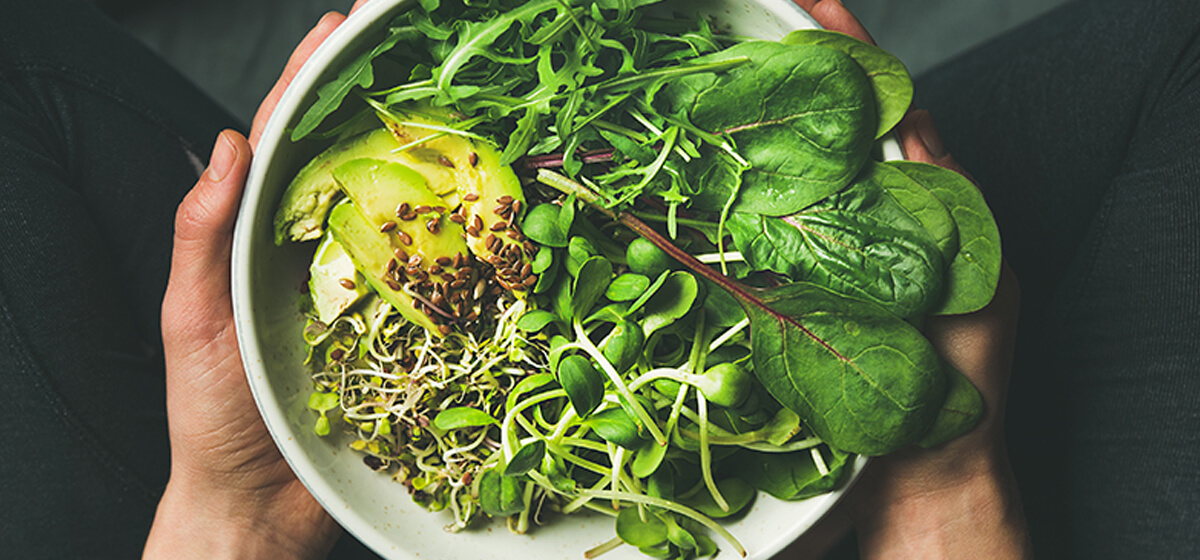
World Vegan Day was recently marked on 1 November where individuals around the world celebrated all things plant-based and the benefits of a vegan lifestyle. This year, it coincides with the beginning of the 26th United Nations Climate Change Conference of the Parties (COP26), where leaders across the world came together to discuss how to mitigate climate change.
According to research published in 2019, it uncovered that animal agriculture is responsible for 87%1 of greenhouse gas emissions and is the leading cause of climate change. Greening your diet is also the most effective way to reduce emissions.
As conversations surrounding global warming continues heating up, this timing serves as a fitting reminder as to what we can do through our everyday diets to combat climate change.
Going beyond the daily recycling and plastic-free efforts and in celebration of World Vegan Day, we’ve listed three easy ways you can give existing plant-based recipes a little twist when whipping up some vegan-friendly meals to share with your loved ones and get them onboard the green movement. Not only does this do good for the environment, it brings us numerous health benefits as well!
1. Swapping for a tofu patty into your sandwich
While one may often think of simply excluding a meat patty to keep our sandwiches vegan friendly, how about swapping it for a tofu “patty” to spice things up a little? These tofu patties are a great source or proteins and amino acids, which makes them a good and flavourful substitute for our regular meat patties!
To make these tofu patties, simply squeeze the excess water out of your block of firm tofu before marinating it with a combination of salt, pepper, garlic and onion powder. Then, coat each piece of tofu evenly with all-purpose flour and pan-fry them over medium heat until golden brown.
To make for a nutritious meal, assemble your sandwich with an array of vegetables – lettuce, tomatoes, cucumbers are our favourite!
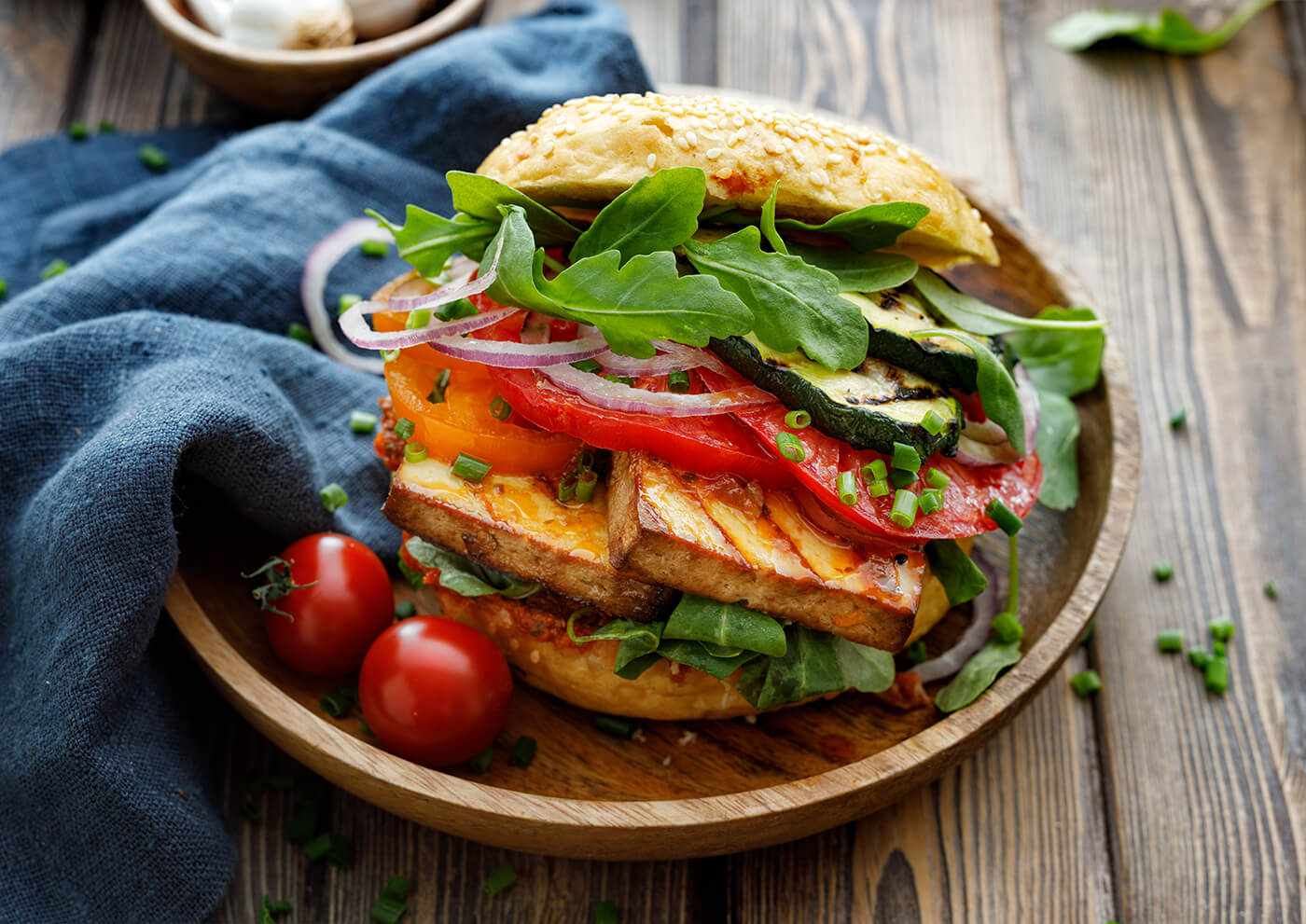
Take a step further on your sustainability journey by supporting local vegetables producer such as our Changemaker – ComCrop, for their range of locally grown produce, which includes the freshest Ruby Red and Emerald Green Lettuce – perfect additions to your sandwich.
You can also check out this tofu patty sandwich recipe – a perfect option if you’re looking for an easy meal on-the-go or for an outdoor picnic!
2. Switching up regular pasta for zucchini noodles
Hands up if you’re a big lover of pasta! As one of the easiest meals to whip up and easily personalised to our own liking, it’s no surprise that pasta is one of the world’s most well-loved dishes.
While we can easily opt for an all greens no meat pasta, how about switching things up and making zucchini noodles instead? This tasty alternative is not only a lighter option to carb-heavy pasta, but also a great source of vitamin C, vitamin A, potassium and iron. What’s more, its high-water content means it will keep you feeling full for a longer period of time, and it’s a great way to get those extra veggies into your diet!
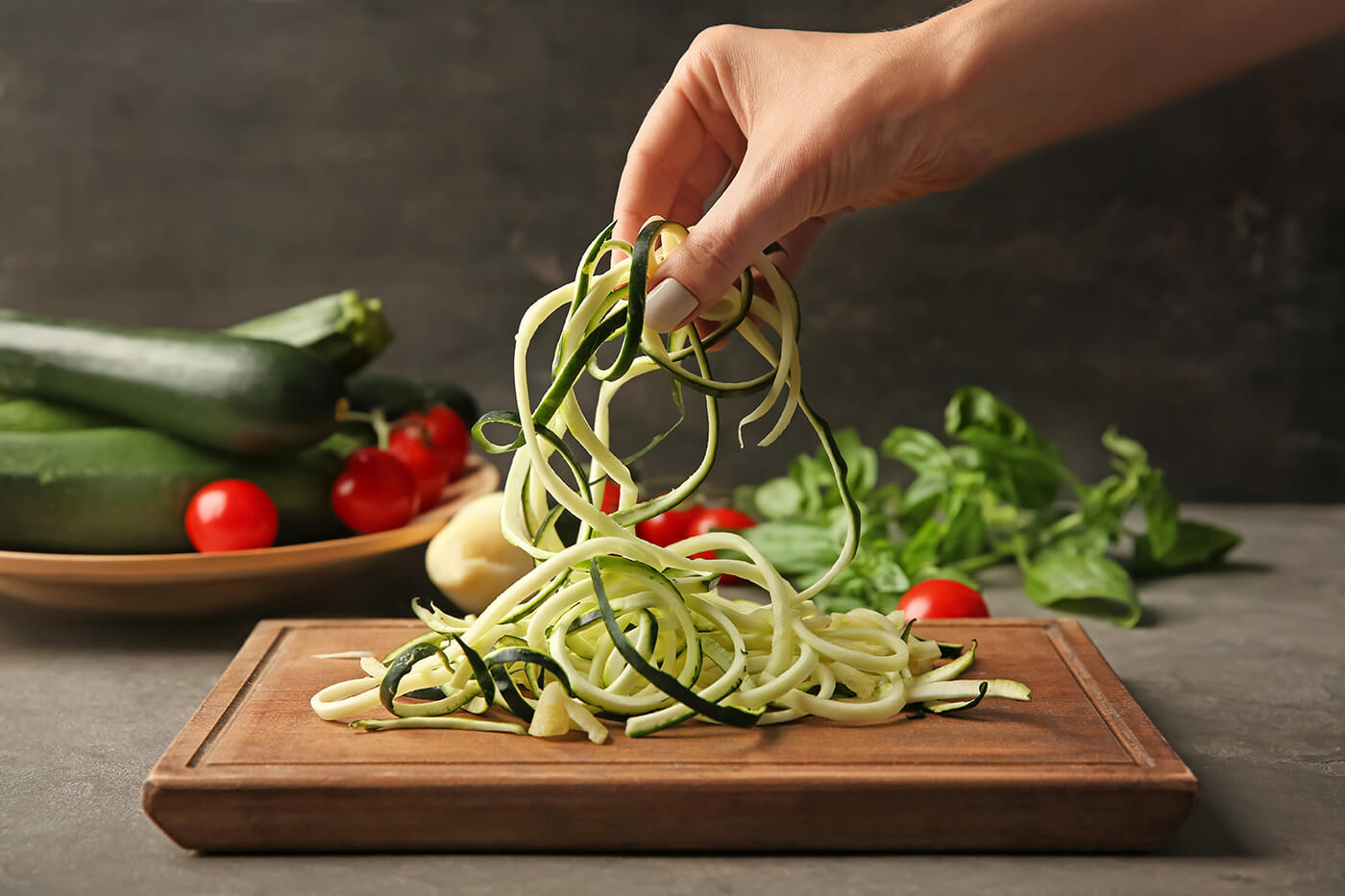
To make zucchini noodles, simply use a spiralizer to slice your zucchini into long ribbons.
Pro tip: When choosing your zucchini, opt for one that is slightly firm and has a glossy finish on its skin to prevent the zucchini noodles from turning out too mushy.
Thereafter, toss it in your favourite tomato-based pasta sauce and voilà! If you’re looking for a healthier pasta sauce alternative, you can also check out Comcrop’s delicious pesto rendition, made from the freshest basil grown locally!
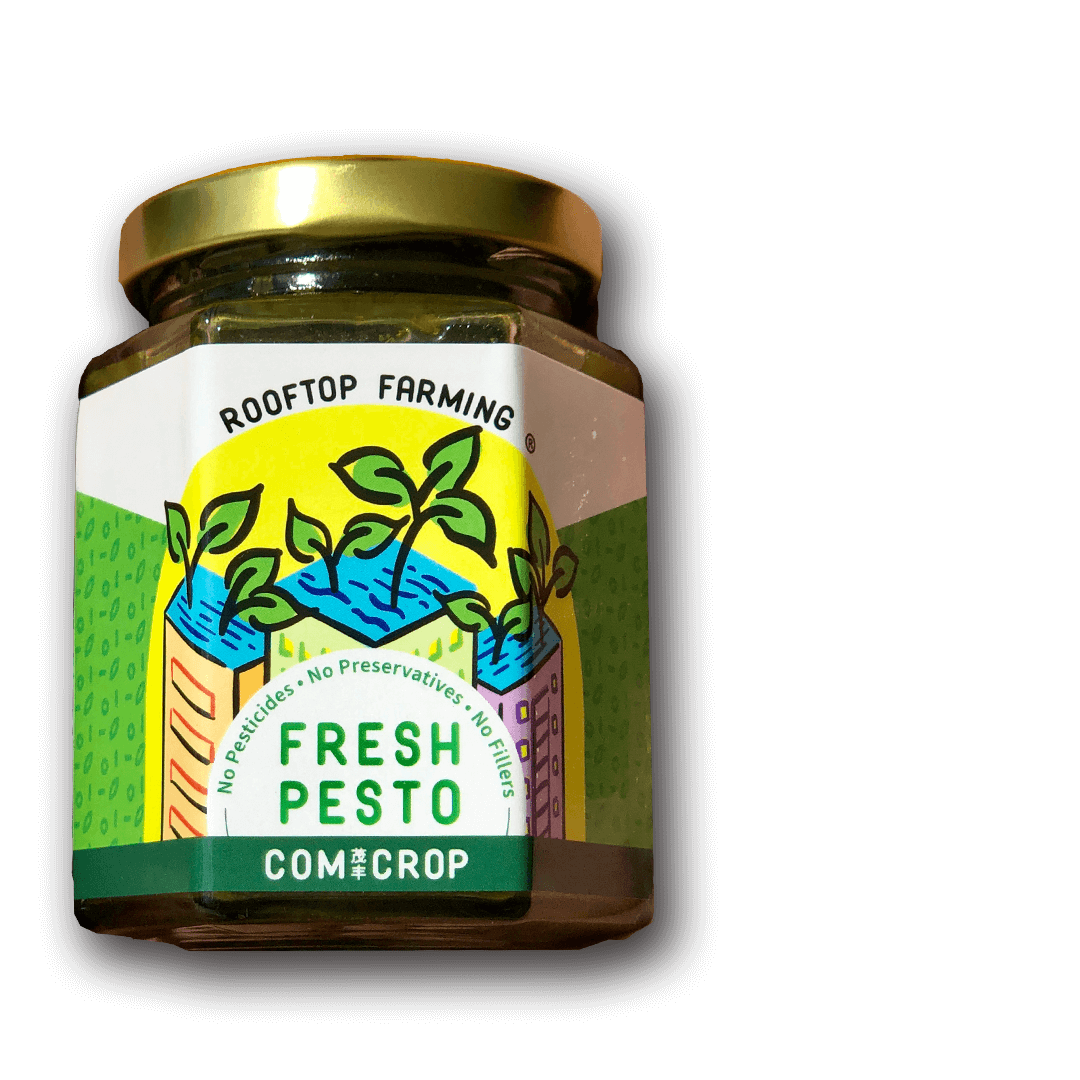
If you prefer making your pesto from scratch, check out this zucchini noodles pesto pasta recipe, that includes a step-by-step guide to making your own fresh pesto. Delicious!
3. Grated cauliflower in replacement of rice
If you lean towards an Asian palate, how about trying your hand at cauliflower fried rice? Instead of using regular rice, grated cauliflower is a yummy alternative that is not only healthier but hearty enough to serve as a main course.
In addition, these florets pack a load of vitamins and minerals. Being high in fibre, it not only promotes feelings of fullness but also helps to feed the healthy bacteria in your gut. To make cauliflower rice, start by washing them thoroughly before chopping it up into large chunks and grating them individually with a grater.
Quick tip: Use a medium-sized hole grater to achieve pieces that best imitate the texture of cooked rice.
Then, simply sauté them over medium heat with the rest of your ingredients like how you’d normally do when preparing regular fried rice. Lightly stir-fry till the cauliflower is slightly crispy on the outside but tender on the inside. Click here for the full recipe that also offers some vegan alternatives to our usual fried rice ingredients!
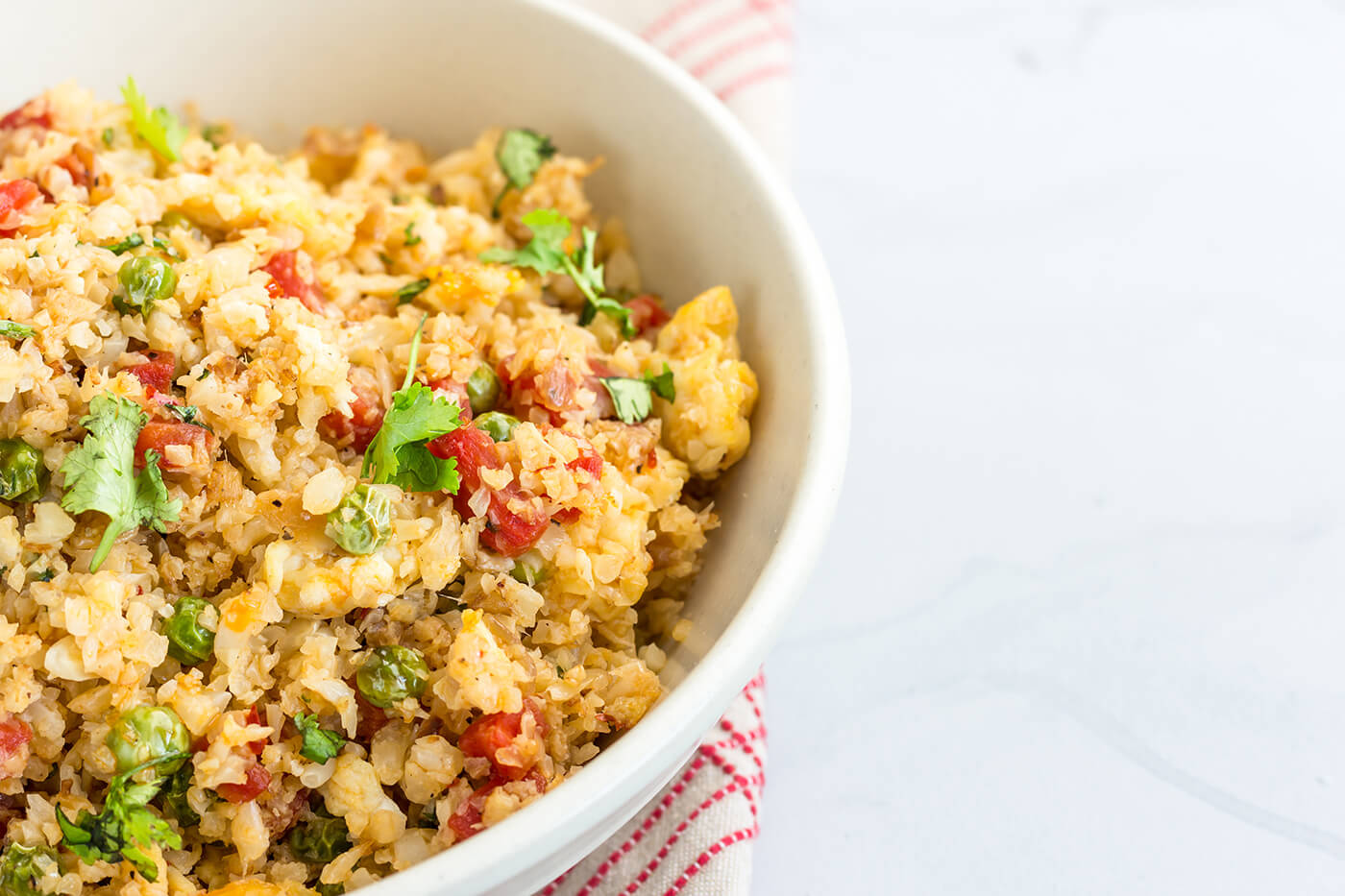
For a refreshing garnish to your fried rice, we’d highly recommend throwing in some microgreens. Though miniscule in size, these tiny greens pack a nutritional punch and delightful flavour. Best of all, they can be easily grown in small spaces, are easy to care for and only takes about a week to harvest! To learn how to grow your own microgreens, check out another of our Changemakers – Cultivate Central, for their tips to get started!
We hope these three suggestions help inspire you to recreate some of your favourite dishes so that they’re not just yummy but also better for Mother Earth. As we approach the year-end holidays, let’s #PowerTheChange and be #JollyGreen together by challenging ourselves to brainstorm some tasty vegan recipes for a greener year in 2022!
Image Credits: Nylon Coffee Roasters
Source: The Sustainability Project
References:
- 1 (2019) Climate Healers, Animal Agriculture is the Leading Cause of Climate Change – A Position Paper https://climatehealers.org/the-science/animal-agriculture-position-paper/
4 lesser-known trails for your next green adventure
- Home
- Articles Posted by (
- Page 4 )
[Post Date]
4 lesser-known trails for your next green adventure
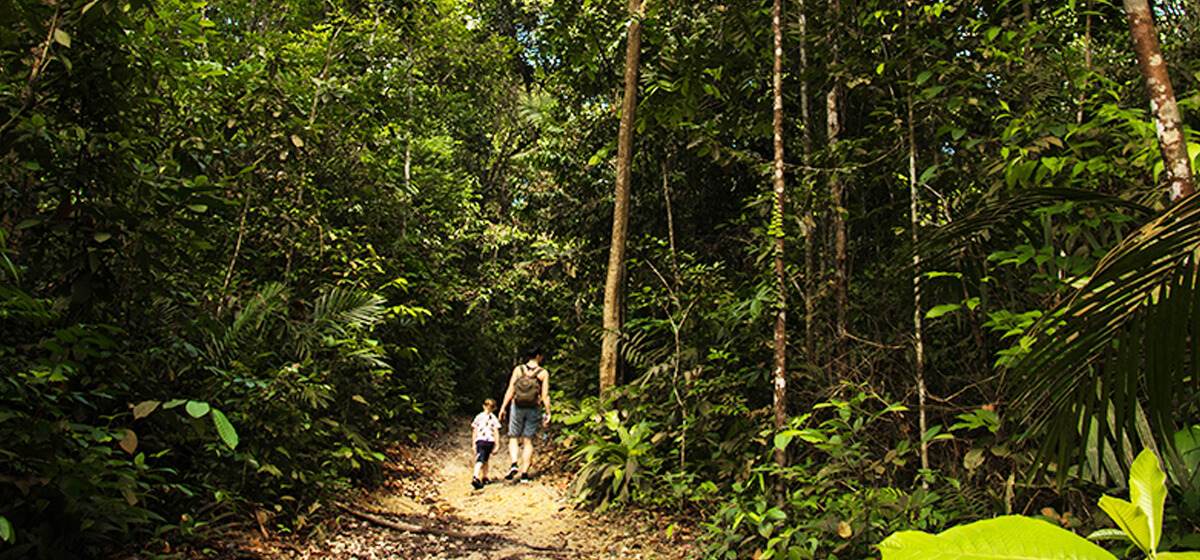
Singapore has a multitude of parks and nature reserves hidden amidst our concrete jungle. With more than 350 nature spots and a variety of forested hills and swampy wetlands, there is no lack of options to escape the hustle and bustle of the city and immerse in the natural beauty of our tropical island.
However, as we continue exploring these scenic routes in Singapore, are we ensuring that we are hiking sustainably? For our little red dot, each pocket of nature is carefully managed to conserve the area’s natural state, providing us much needed respite from our daily lives. We all have a part to play to preserve these green spaces for our future generations in the years to come.
One simple way to be eco-friendly is by visiting lesser-known parks and nature reserves to minimise the issue of overcrowding. By doing so, we reduce the stresses the more popular nature trails face and allow them more opportunities to regenerate.
As we approach the school holidays, we’ve put together four lesser-known nature walks in Singapore for your next adventure, together with easy tips to hike more mindfully and sustainably.
1. Tampines Eco Green
Tucked away in the heart of Tampines is a sprawling 36.5-hectare green sanctuary known as Tampines Eco Green. Resembling a rustic savannah with marshlands, secondary forests and freshwater ponds, the park is home to over a hundred species of birds, butterflies and dragonflies – perfect for those who enjoy spotting wildlife!
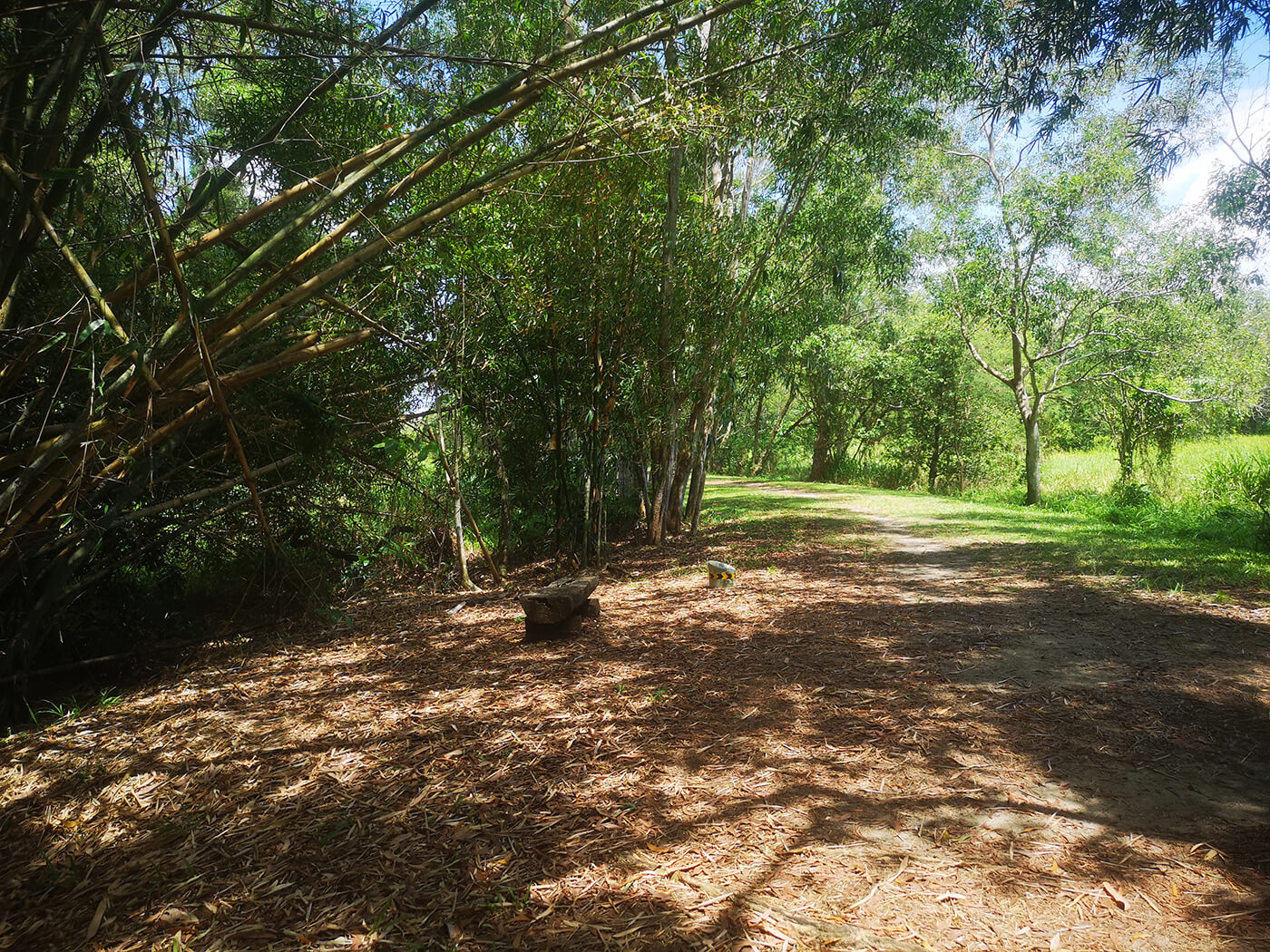
Tampines Eco Green prides itself as an ecologically conscious park that features an eco-toilet, vegetated swales, and bird hides. Everything from its sign boards to park furniture are made from recycled and eco-friendly materials! With three different trails – Diversity Trail, Forest Trail and Marsh Trail – to choose from, you’ll be sure to discover something new with each visit.
P.S. Do plan your visit earlier in the day as the park is not lit at night to minimise disturbance to the wildlife in the park.
Click here for directions on how to get there.
Green Tip: Stick to established trails when hiking
While we may be tempted to go off-trail and explore an untouched area of the park when you spot or discover something interesting, it is important to remember that we should still keep to the designated paths to avoid causing damage to the natural environment.
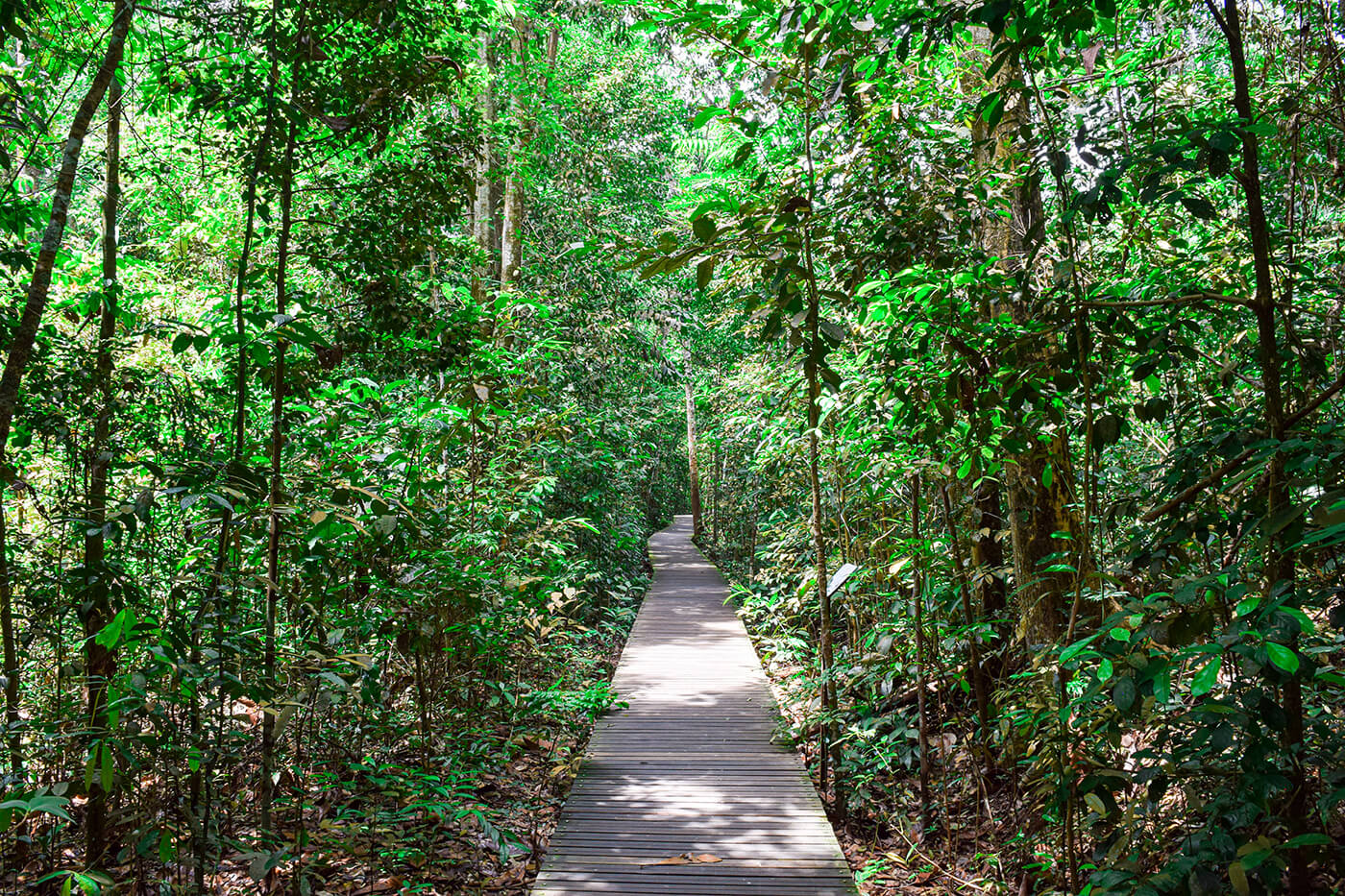
By being a non-intrusive hiker, this will not only help to protect the various species of flora and fauna but also minimise any unnecessary disruption into the lives of the wildlife.
2. North-Eastern Riverine Loop
Meandering through the Punggol district is the North-Eastern Riverine Loop that boasts beautiful views of glittering reservoirs and waterways. With a variety of birds, animals and plants that call it home, this park connector is an undeniable delight for nature lovers.
Spanning 26km, the North-Eastern Riverine Loop is perfect for anyone looking for a full day of exploration! What’s more, check out the various picturesque spots that can’t be missed including the Lorong Halus Bridge, Punggol Promenade Punggol Point Walk and Kelong Bridge. If you prefer to cycle, we’d recommend beginning your journey at Punggol Park where bicycle rentals are available.
Click here for directions on how to get there.
Green Tip: Do not feed the wildlife
While we may want to feed animals that we come across during our hikes out of compassion, doing so actually does more harm than good. Feeding wildlife alters their behaviour and may lead to them associating humans with food. This often results in undesirable consequences such as the animals grabbing food from passing individuals and losing their natural ability to hunt in the wild.
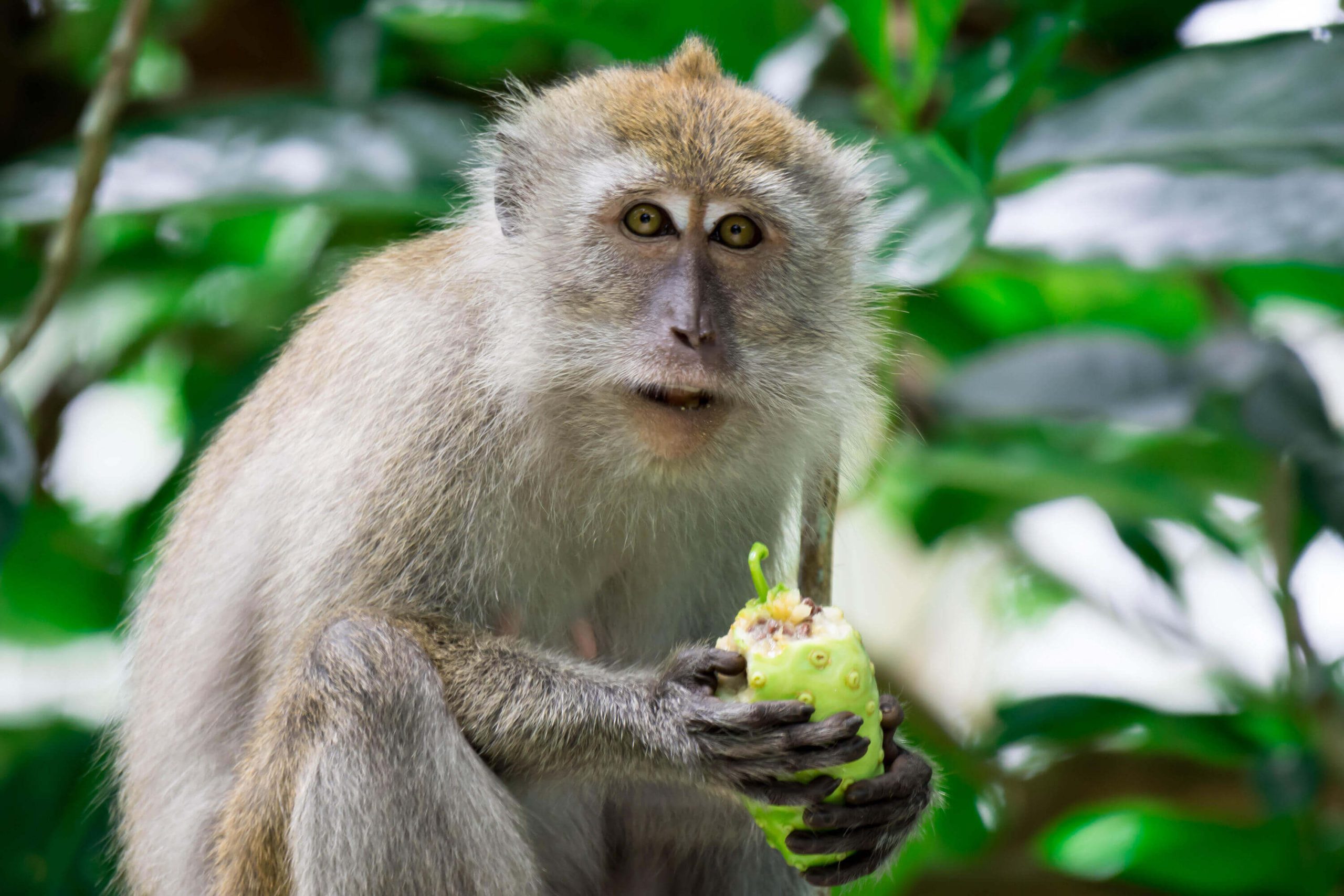
In more serious situations, these animals may gradually be viewed as pests and pressure may be put on the authorities to cull them. So, the next time you spot a cheeky macaque or colourful hornbill, refrain from feeding and simply admire them from afar. Better yet, a more sustainable option is to avoid bringing food along during your hikes. Not only will this help in reducing packaging waste, it will also minimise any potential unpleasant situations with the animals.
3. Jurong Lake Gardens
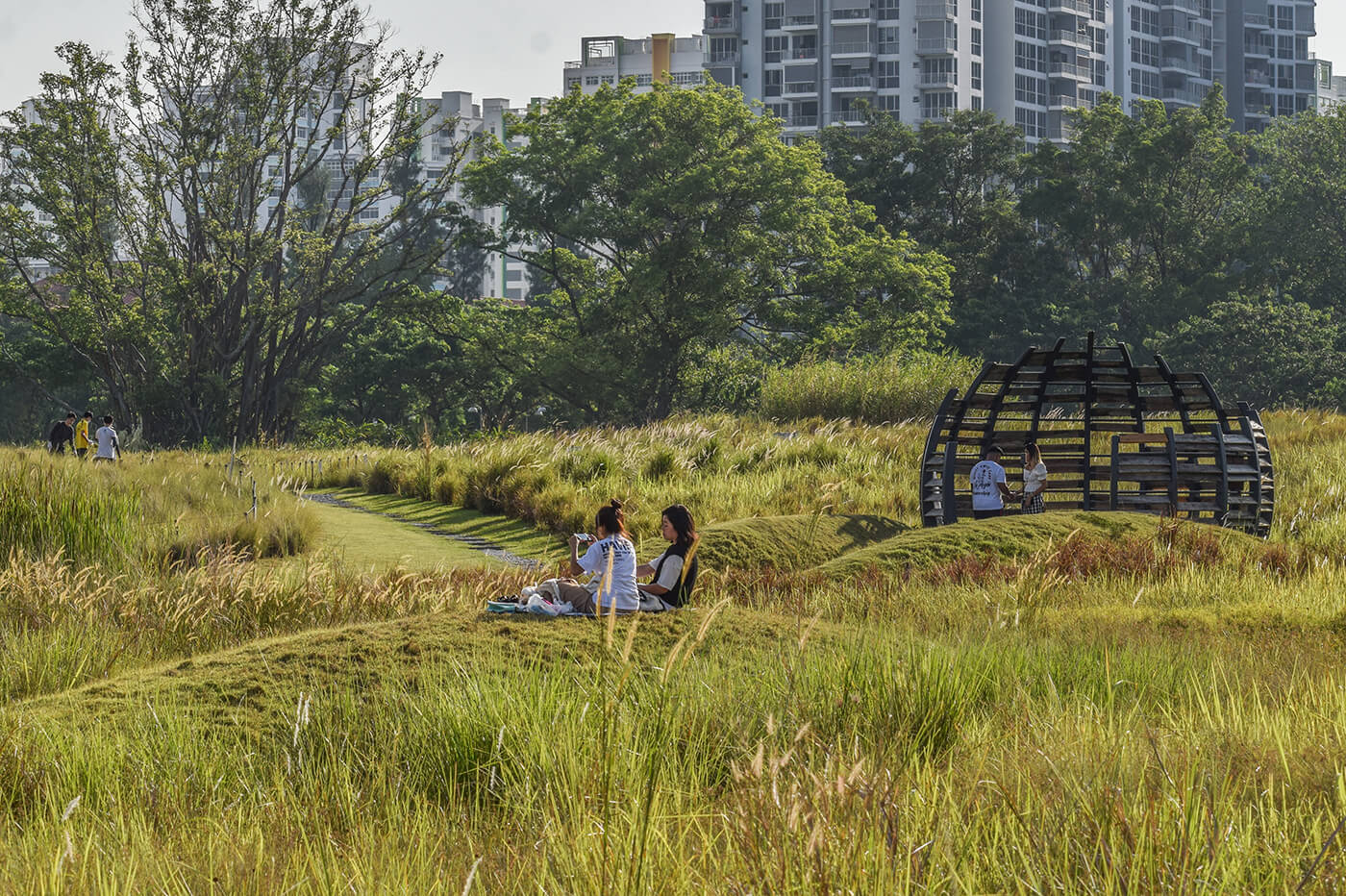
A tranquil lakeside destination, Jurong Lake Gardens is perfect for visitors to enjoy various natural landscapes including an expansive grassland, a freshwater swamp and of course, a freshwater lake.
If you’re an early riser, head down to the Jurong Lake Boardwalk just after the break of dawn to be rewarded with a charming sight of mists over the glassy lake.
Prefer to head down to the park later during the day? Take in spectacular views of the park on Rasau Walk that meanders over the water’s edge or immerse yourself amongst the towering Lalang-like grasses at the grasslands. For the latter, there is even a dome-shape structure where you can rest and observe nature in action! If you’re up for some water sports, check out PAssionWaVe @ Jurong Lake Gardens where a myriad of exciting water activities, such as paddle boating and kayaking, are offered.
Click here for directions on how to get there.
Green Tip: Keep your trash with you
The negative impact of littering goes beyond making our parks look unsightly. Litter, especially plastic, endangers our wildlife as they may mistake these items for food and consume them. By making an effort to not litter even the smallest items like a banana peel, we are keeping these green spaces a haven for our wildlife.
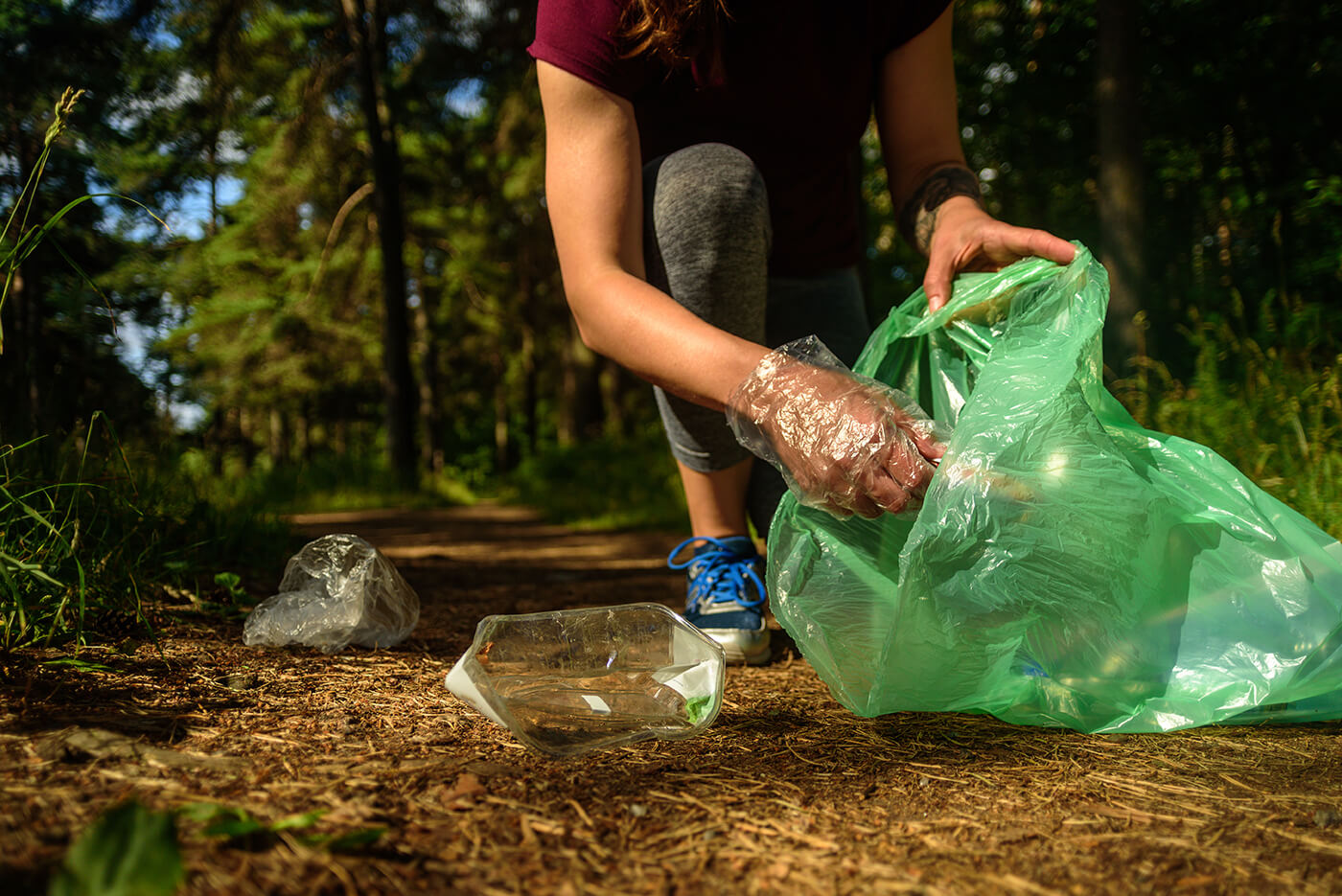
To go a step further, you can even bring along some trash bags and gloves to pick up any litter that you see while hiking. Not only does this help us do good for Mother Nature, it also makes for a great workout!
4. Kranji Marshes
Along the north-western shore of Kranji Reservoir lies Kranji Marshes, a rustic freshwater marshland spanning the size of 60 football fields. This unique sanctuary covers a range of habitats including a freshwater marsh, woodland and grassland. Here, it is home to over 200 species of wild residents as well as a rich variety of flora and fauna – a promising treat for any visitors!
If you’re feeling up for it, climb to the top of the Raptor Tower to enjoy a brilliant bird’s eye view of the surrounding marshes. Between the months of November to March, keep your eyes peeled for migratory species such as the Black Baza and Japanese Sparrowhawk, or spot nationally endangered species such as the Purple Swamphen.
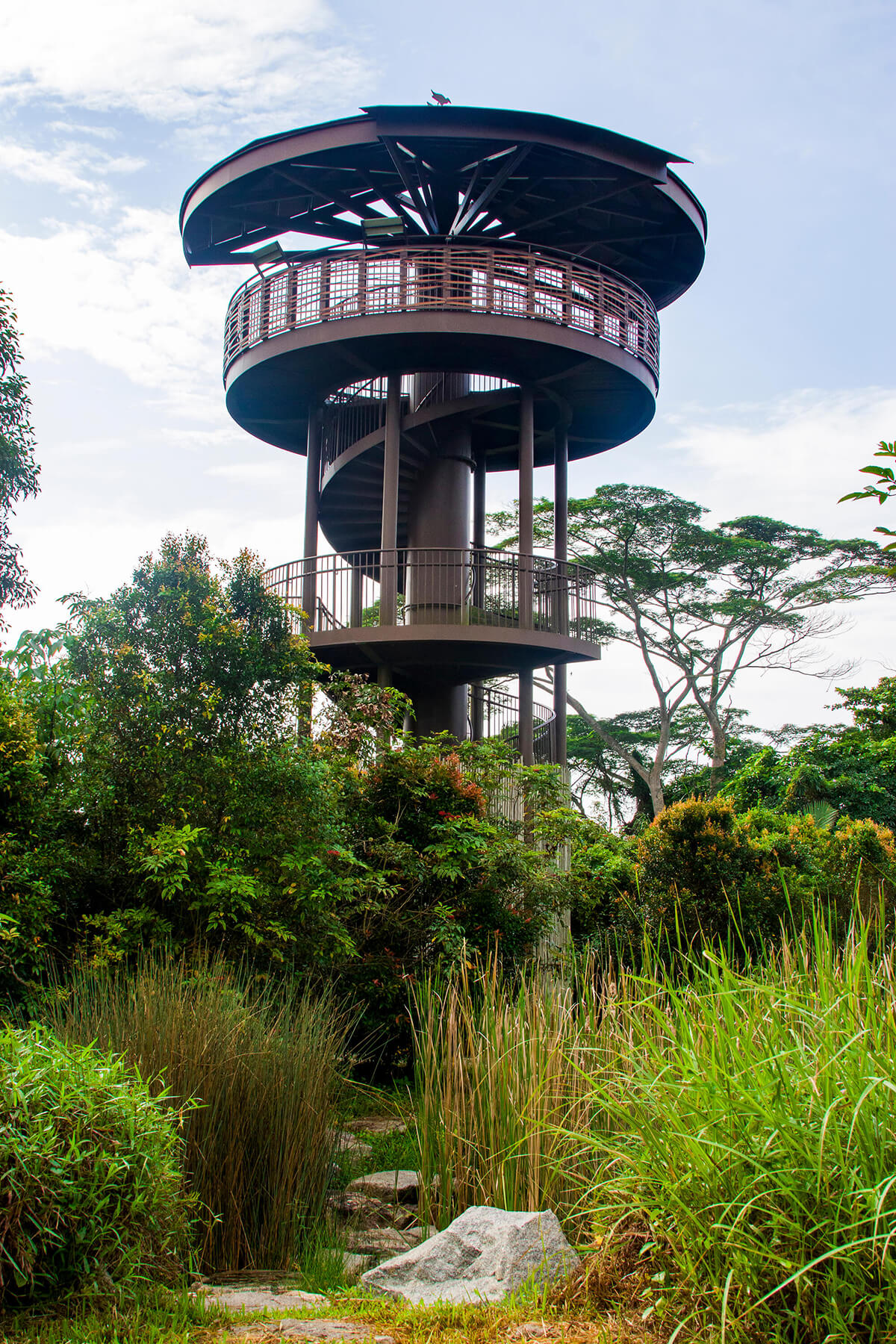
Click here for directions on how to get there.
Green Tip: Opt for eco-friendly sunscreens and insect repellents
Did you know? Sunscreen and insect repellents contain many chemicals that are harmful to our environment. While these chemicals may not have an immediate impact on the trails that you are hiking on, they do cause harm to the natural world in the long run when we wash them off and the water returns our water bodies. For sunscreen and insect repellent sprays, they are also notorious for containing CFCs that destroy the ozone layer.
As such, we would recommend opting for eco-friendly sunscreens and insect repellents such as Sigi Skin’s cruelty and paraben-free sunscreen and Three Star Brand’s Mozzie-Free insect repellent that is made from natural ingredients.
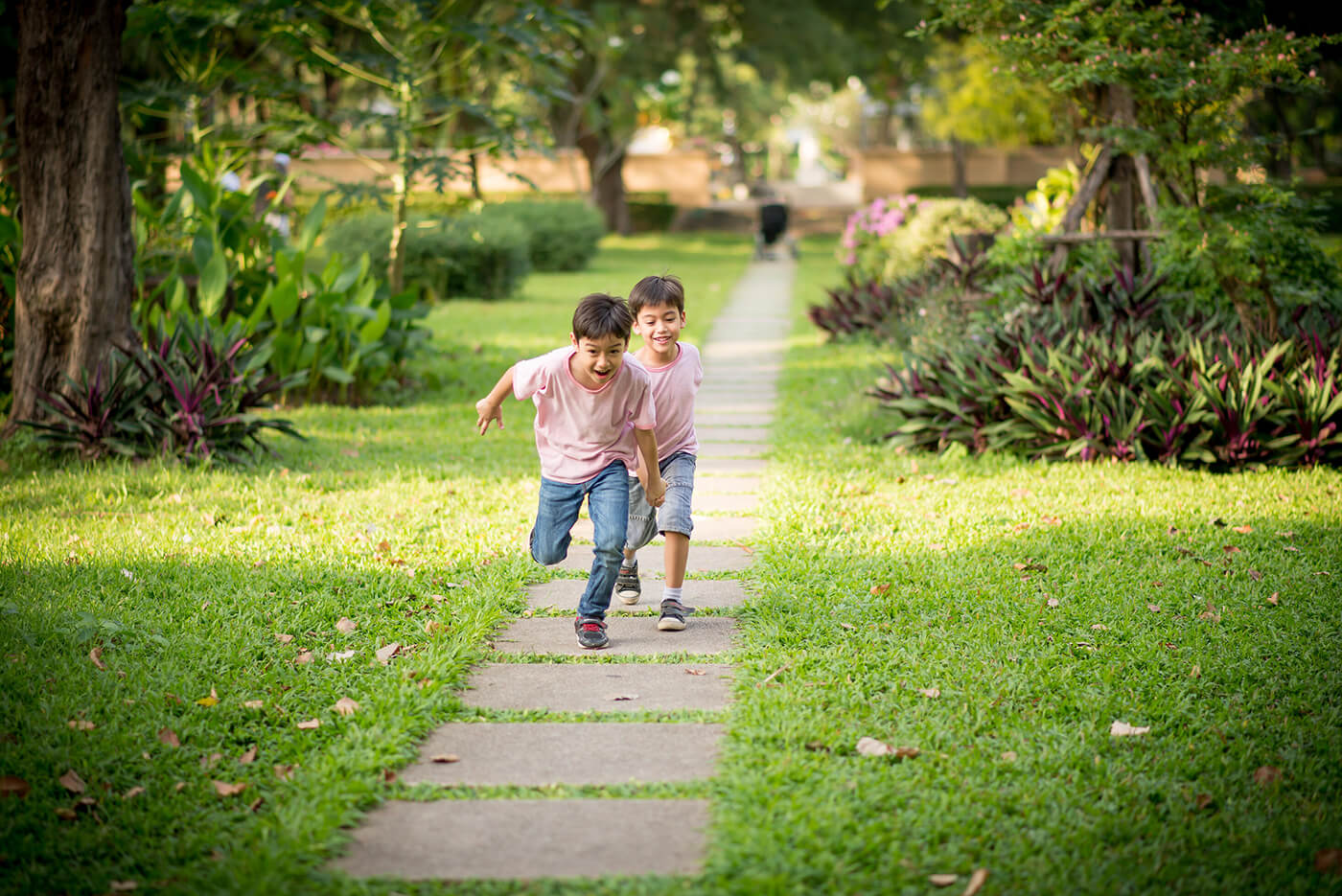
Image Credits: Nylon Coffee Roasters
As you embark on your hiking adventures during the end of year holidays, we hope that these simple tips will help you #PowerTheChange and contribute to the preservation of our green spaces. Every effort counts, and we can all make a difference to protect our precious floral wildlife and fauna for our future generations to enjoy!
Source: The Sustainability Project
References:
- 1 (2019) Climate Healers, Animal Agriculture is the Leading Cause of Climate Change – A Position Paper https://climatehealers.org/the-science/animal-agriculture-position-paper/
4 Top tips to help you embark for a zero-waste kitchen!
- Home
- Articles Posted by (
- Page 4 )
[Post Date]
4 Top tips to help you embark for a zero-waste kitchen!

It is no secret that Singaporeans are well-known foodies. As we continue to stay home more amid dine-out restrictions, most of us may have tried our hands in whipping up sumptuous meals, and even baking, in the kitchen.
While cooking at home is typically a healthier and more sustainable alternative than ordering in or eating out, are we really reaping the eco-friendly benefits that home cooking brings? According to the Ministry of Sustainability and the Environment, food waste makes up about half of the average waste disposed of by each household in Singapore daily. Of the food waste, more than half could have also been prevented, with staples such as rice, noodles and bread being the most commonly wasted food items.
In conjunction with World Food Day on 16 October, how about challenging yourself to adopt a zero-waste kitchen, by leaving behind as little food and packaging waste as possible when cooking and dining this month?
There are many ways we can reduce waste in the kitchen and #PowerTheChange. Here, we’ve put together four easy tips to help get you started!
1. Make a weekly meal plan
Always catching yourself staring at your fridge while you ponder over what to cook for dinner? How about breaking the cycle by putting aside an hour during the weekends to plan out your meals for the following week? This will not only help you take stock of what you currently have in your kitchen, it also streamlines the ingredients you require!

For instance, if a whole chicken is sufficient to be spilt across meals for your family, you can plan different dishes that incorporates the entire chicken for the week to reduce any wastage. If your children have their own food preferences, you can also rope them in to brainstorm on what they’d like to have during the week to make meal planning more fun!
By doing so, this ensures that you do not buy any items that you already have in your kitchen, which saves you money and prevent food – especially perishables – from being unnecessarily wasted.
And while you’re at it, keep your loved ones healthy by making these meals a balanced and wholesome one too! Check out these easy guidelines by the Health Promotion Board, where they list down examples of nutrients and the recommended servings needed each day!
2. Purchase from zero-waste grocery stores
In recent years, Singapore has seen a rise in zero-waste grocery stores that offer everything from pasta to tea leaves and soy sauce, sans the plastic packaging seen in regular grocery chains. At these stores, shoppers are encouraged to bring their own reusable containers and fill them up with the groceries they’d like to purchase.
Besides the benefit of reducing the amount of plastic waste generated, it also allows you the flexibility to purchase as much or as little as you need, minimising the amount of food wasted! In addition, these stores, such as Unpackt and Eco.Le, usually source from eco-conscious and socially responsible suppliers, which promises that you’re supporting meaningful causes through your buys.
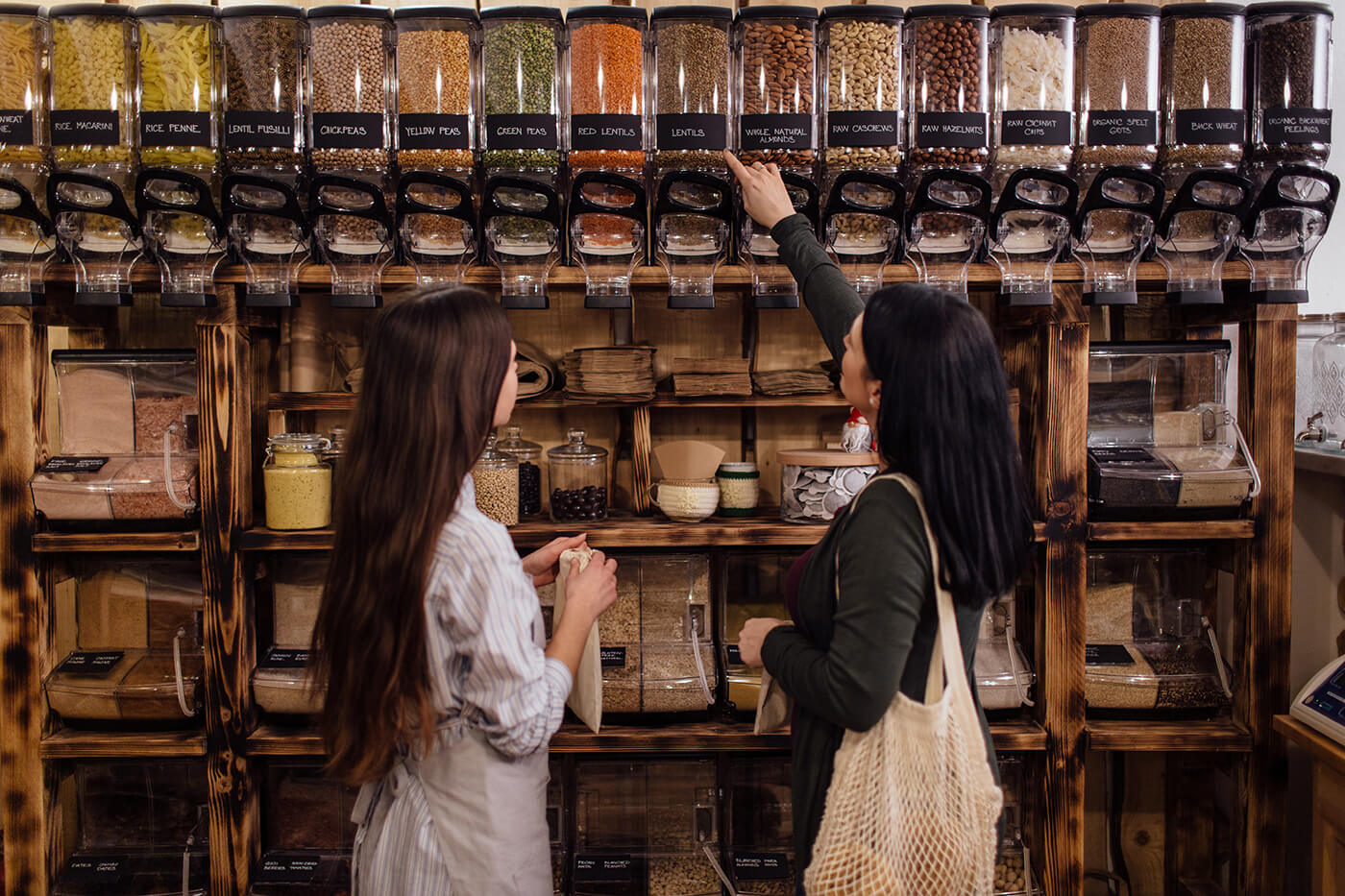
If you’d like to go a step further and go green for your kitchen cleaning products as well, some of these stores also have eco-friendly dishwashing liquid and biodegradable dishwashing sponges!
3. Try growing your own fresh produce
Contrary to popular belief, you do not actually need a lot of space or even a particularly green thumb when growing fresh produce from home! For fruits and vegetables such as cherry tomatoes, chilli peppers and kangkong, they fit perfectly in small spaces (perfect for HDB-living) and thrive under abundant sunlight and the sweltering Singapore heat.
Growing your own produce allows you to harvest the amount you need, instead of purchasing an entire packet from the grocery store and only utilising a portion of it, which would lead to unnecessary food waste. In addition, the process of growing your own produce also deepens the appreciation you have with food, thereby encouraging you to finish consuming every portion to reduce wastage.
Interested to build your little home garden but no idea where to begin? Check out our #ChangeMaker Cultivate Central’s upcoming talk about how you can kick start your home gardening journey!
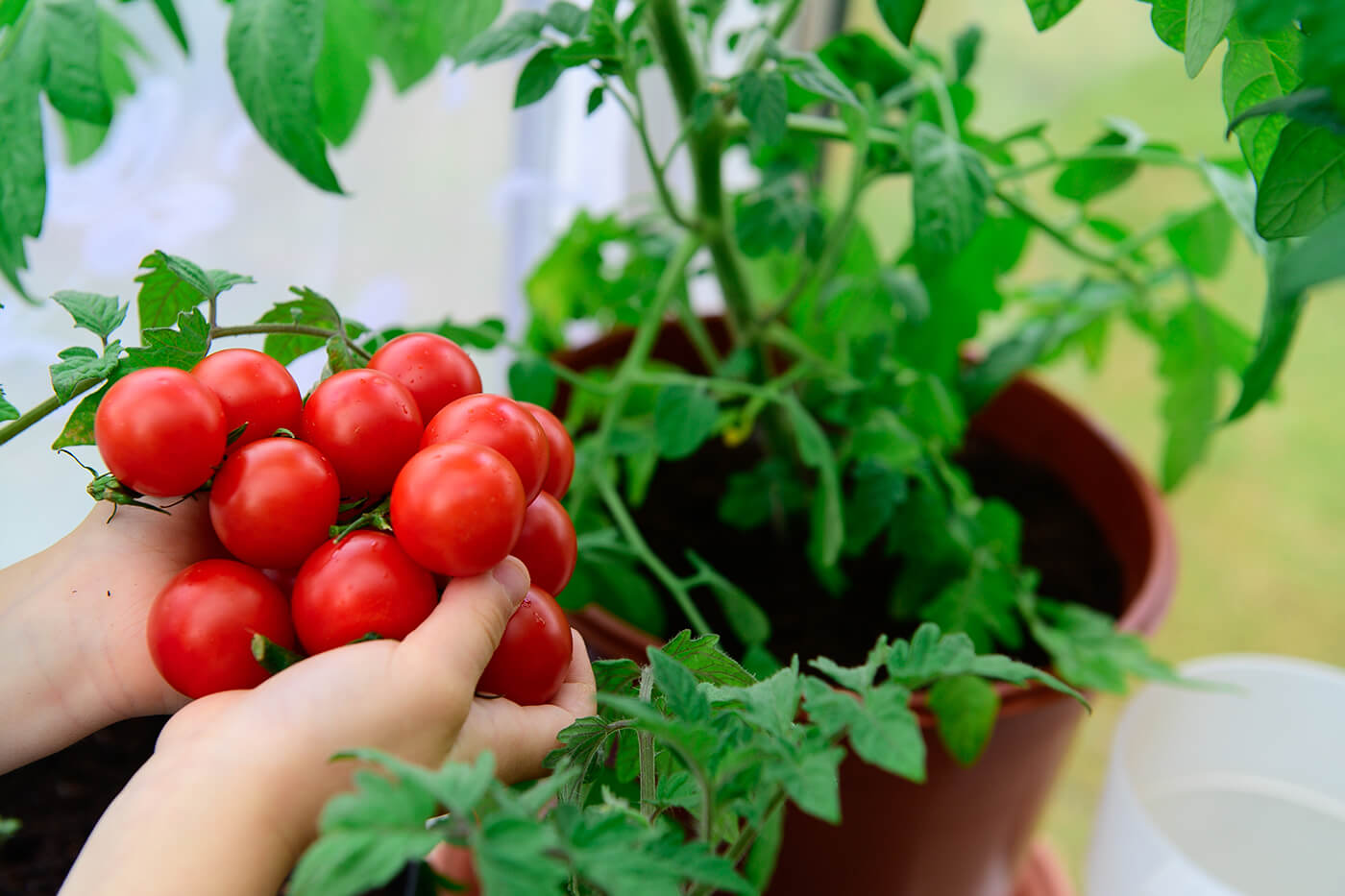
4. Composting any leftover food scraps
A key element of zero-waste kitchen is to use every part of your ingredient, including the leftover food scraps. What can you do with these food scraps, one might ask. How about composting these to create a nutritious fertiliser for your plants or fresh produce; talk about a true circle of life!
With composting, you will also help in keeping these food waste out of the landfill where it is typically broken down by micro-organisms in the absence of oxygen and emits methane, a type of greenhouse gas that contributes to global warming. According to a study by Oxford University, it was found that food wastage was responsible for approximately 6% of global greenhouse gas emissions!
To start, all you need is a bin with a lid, watering can, gardening fork, soil and some dried leaves. You can also check out Cultivate Central’s full composting guide here for more details!
As we celebrate World Food Day, let us take some time to be more mindful in purchasing only what we need and making a conscious effort to finish our meals to reduce food wastage. With each little step, we can together #PowerTheChange for a greener future!
Image Credits: Nylon Coffee Roasters
Source: The Sustainability Project
References:
- 1 (2019) Climate Healers, Animal Agriculture is the Leading Cause of Climate Change – A Position Paper https://climatehealers.org/the-science/animal-agriculture-position-paper/
